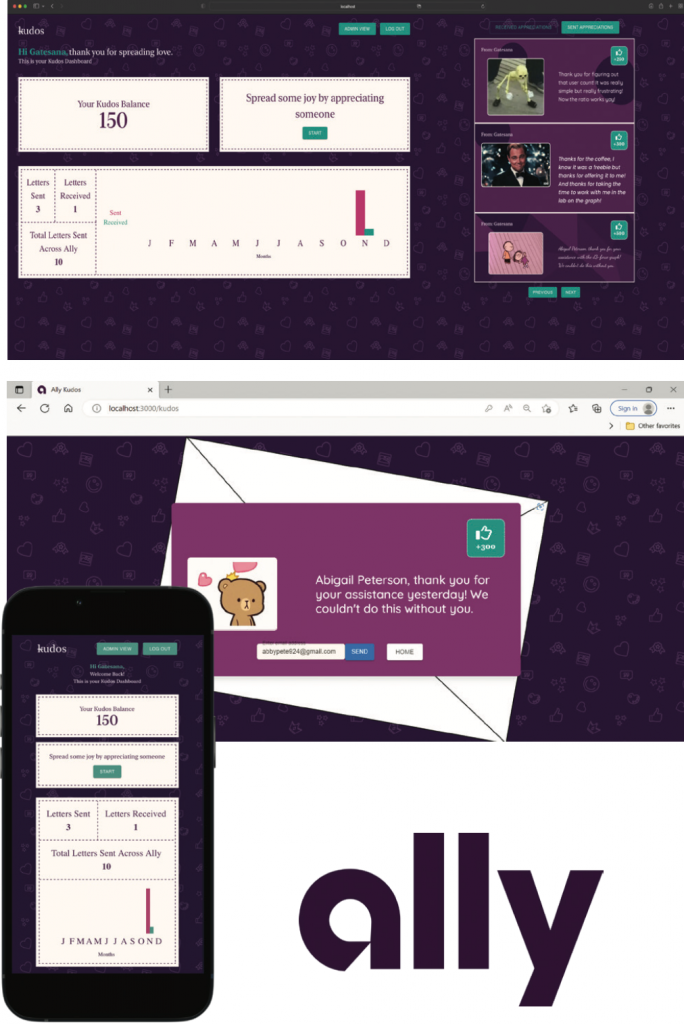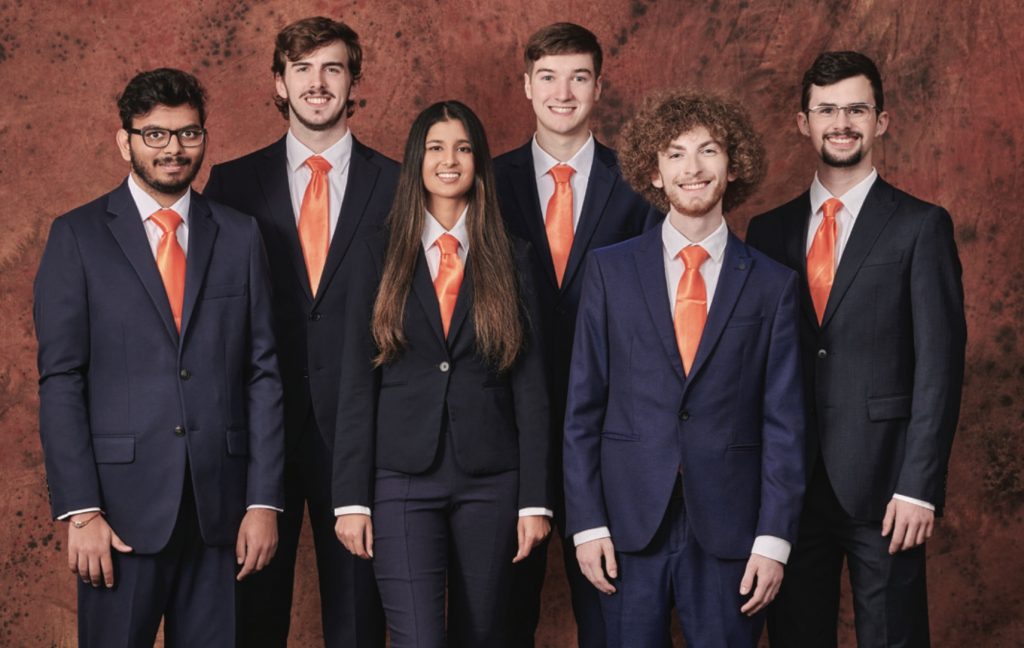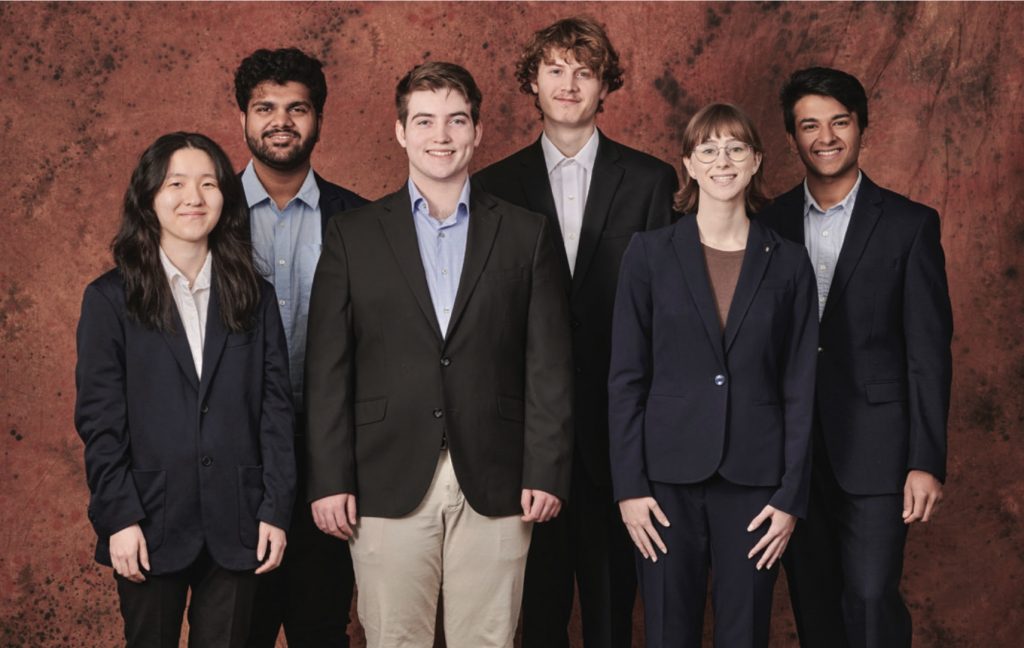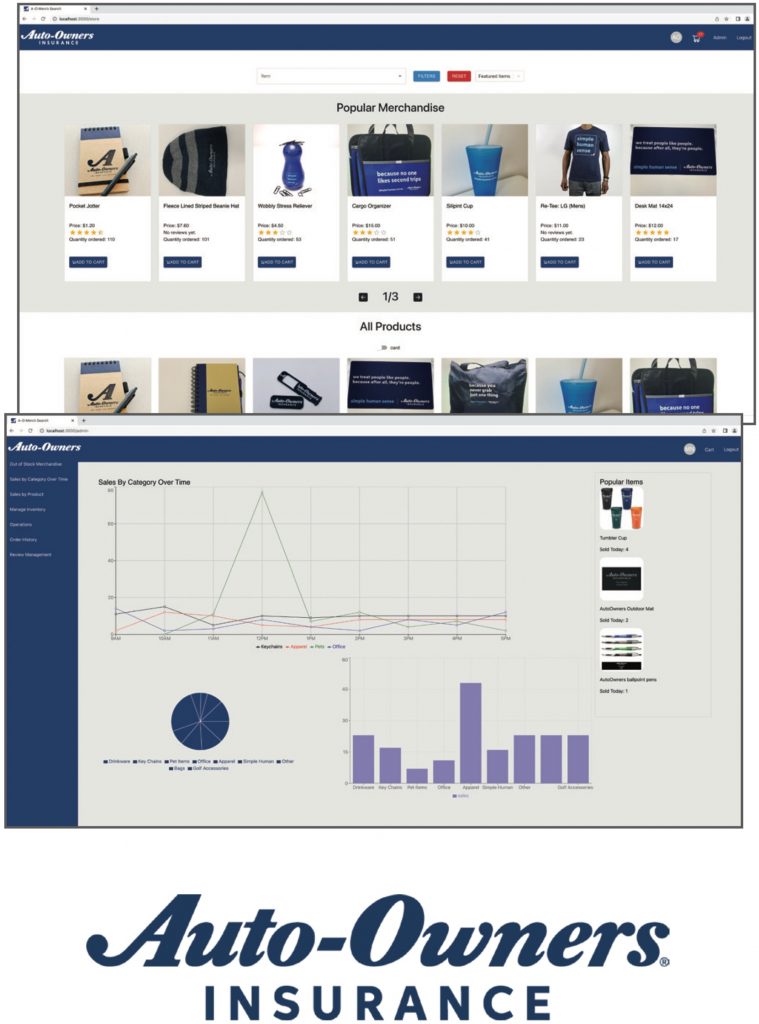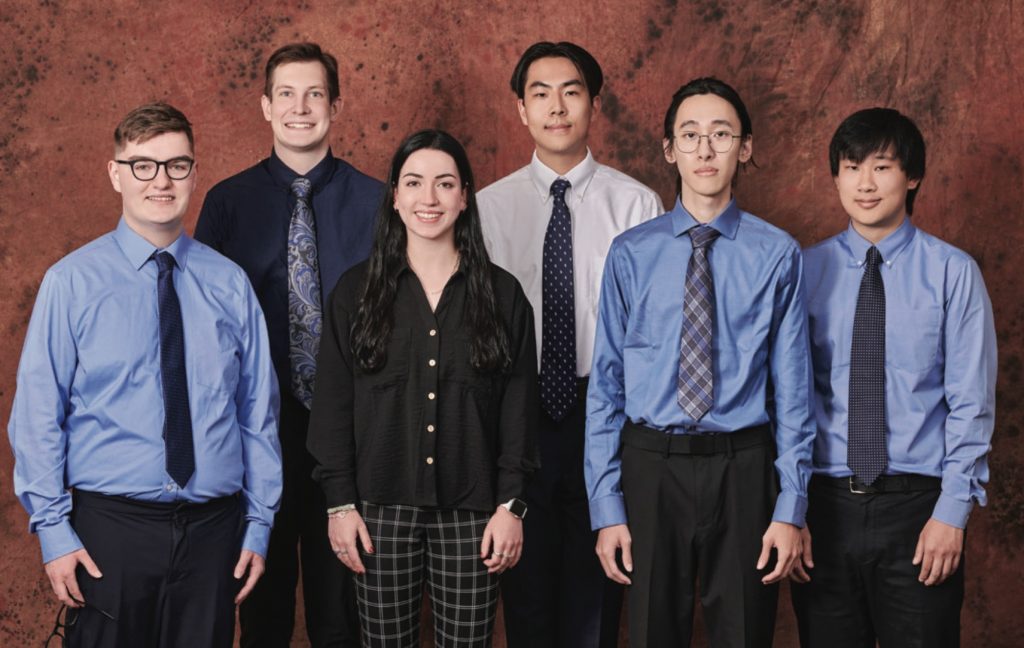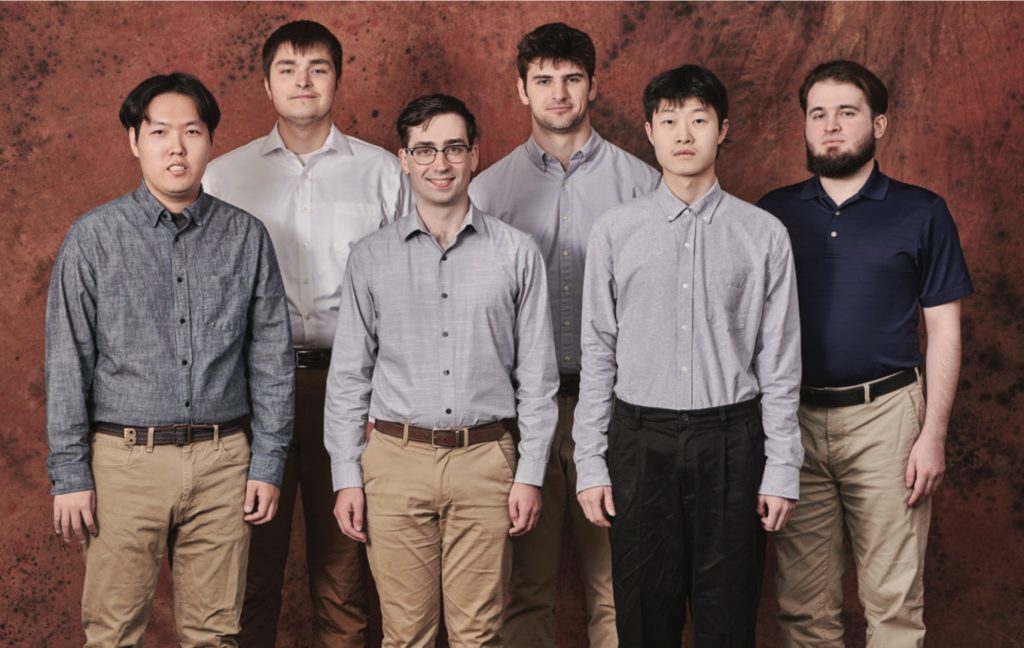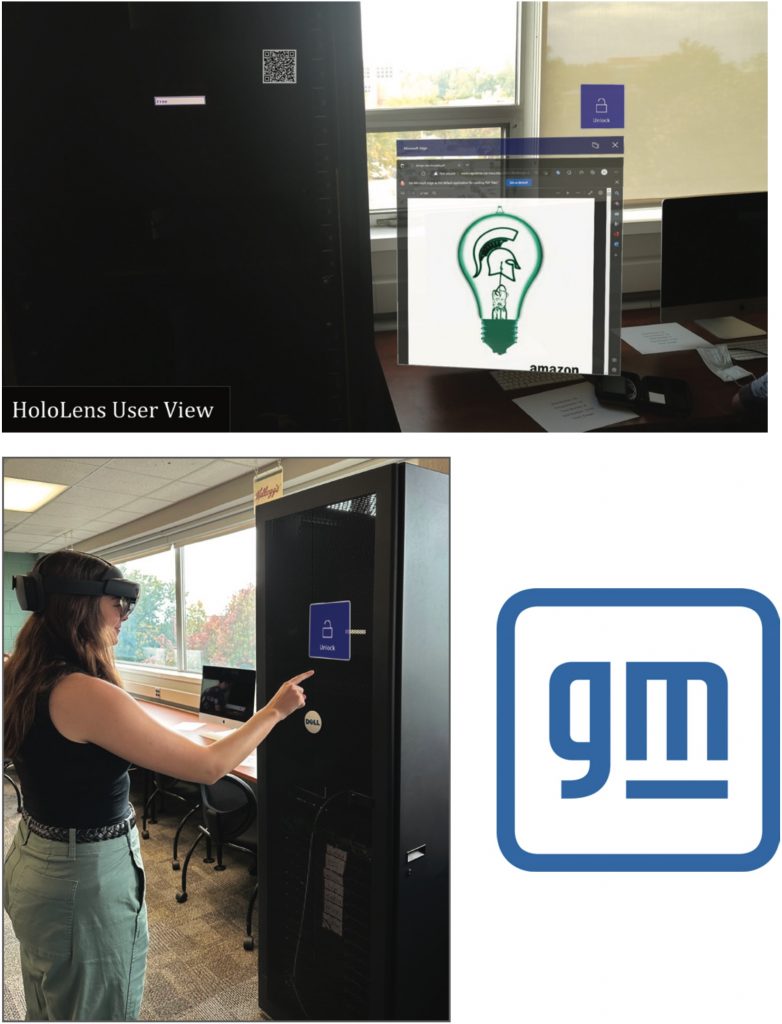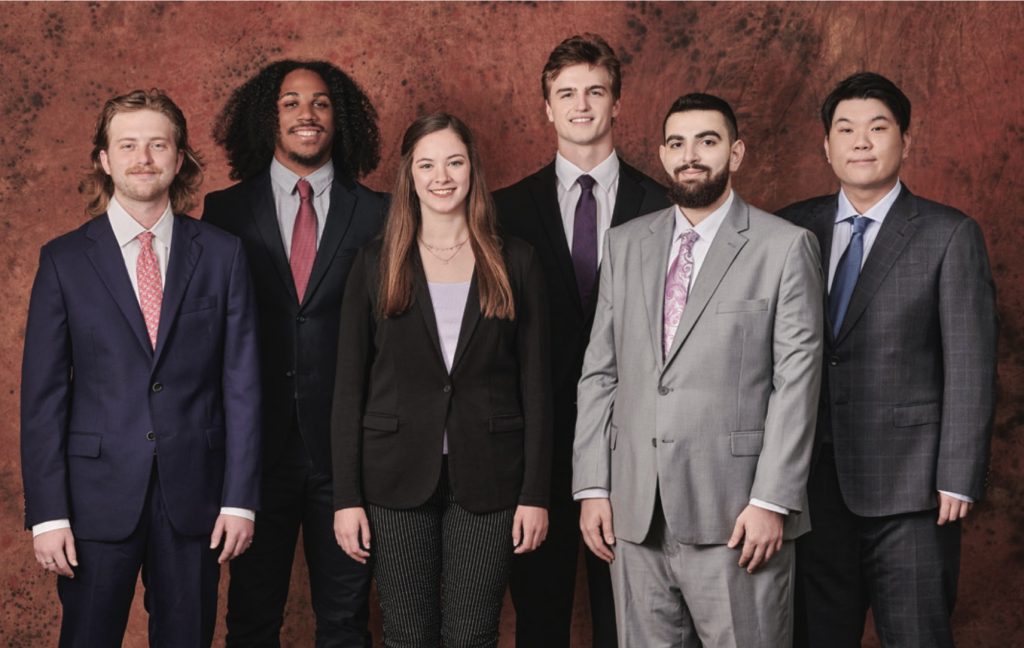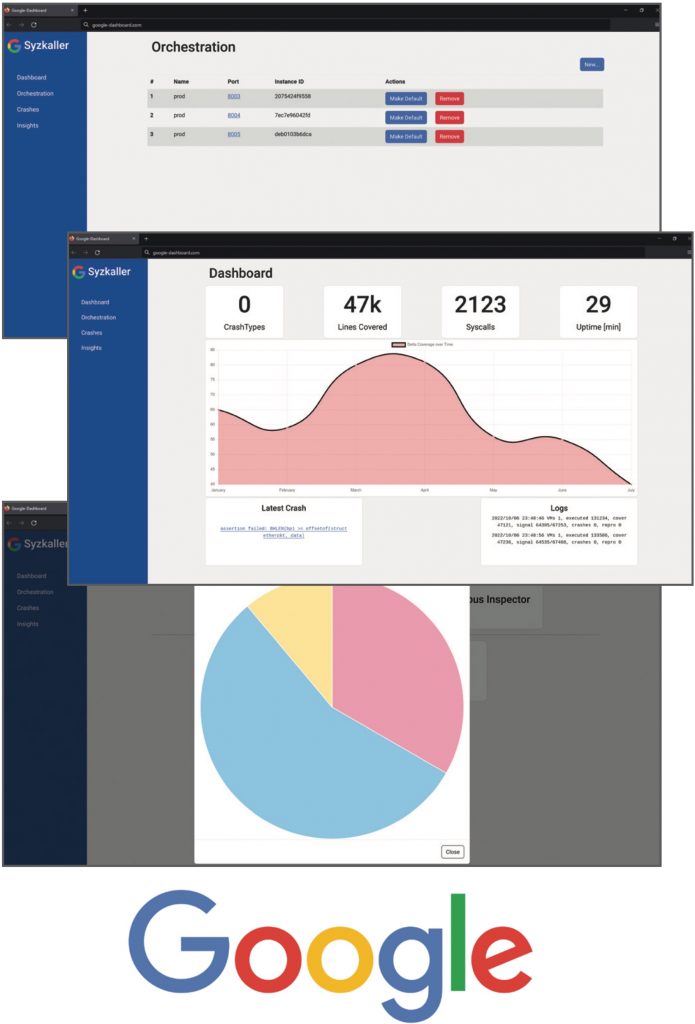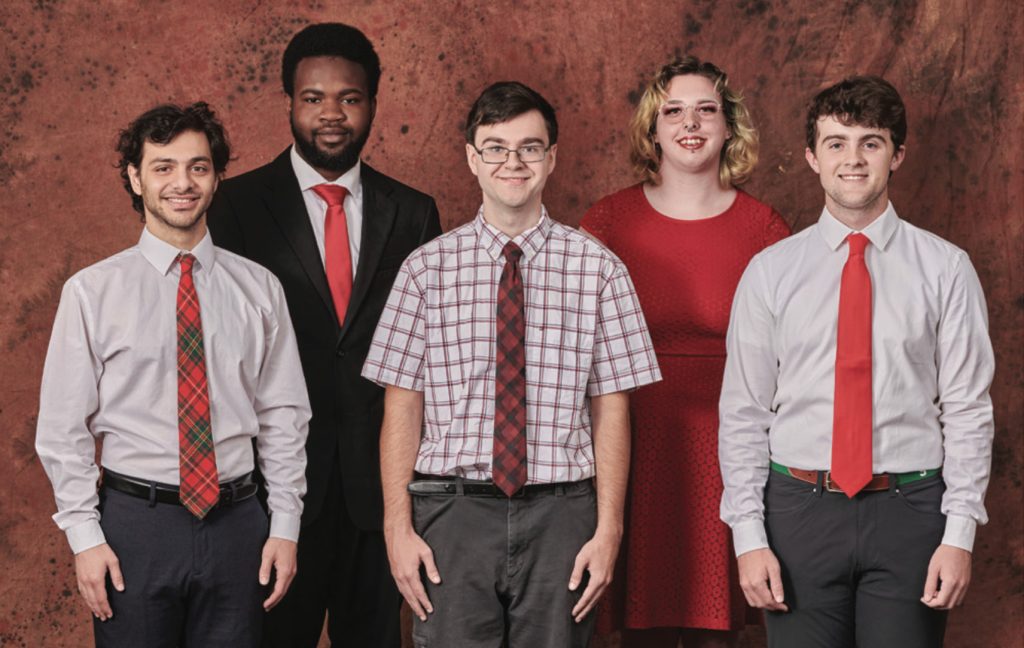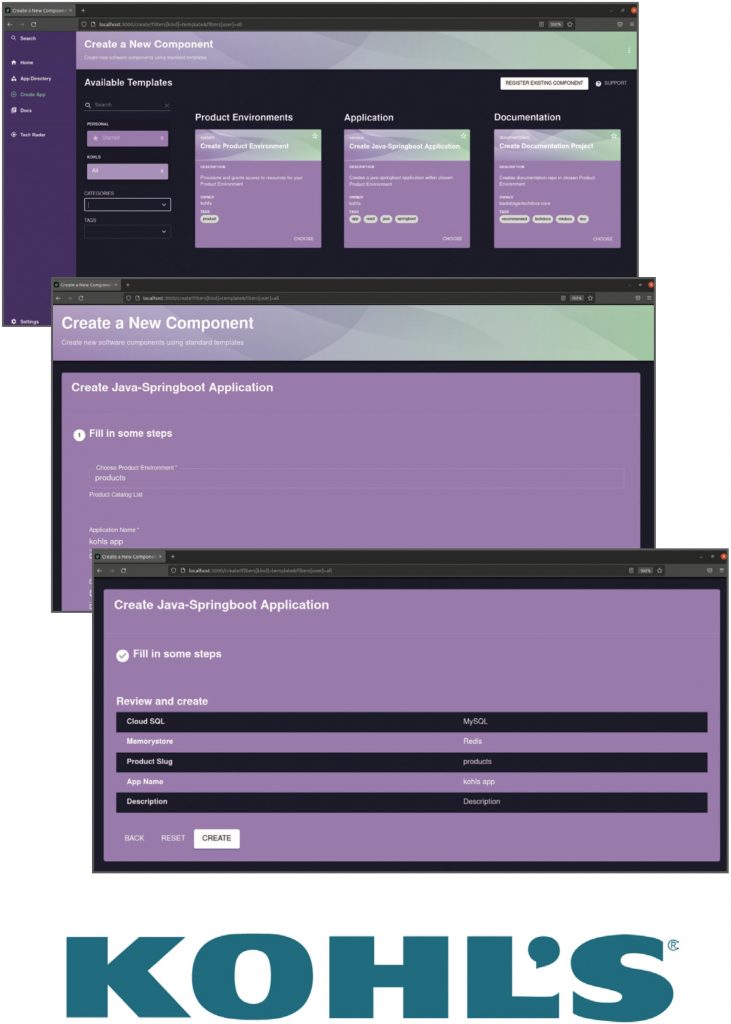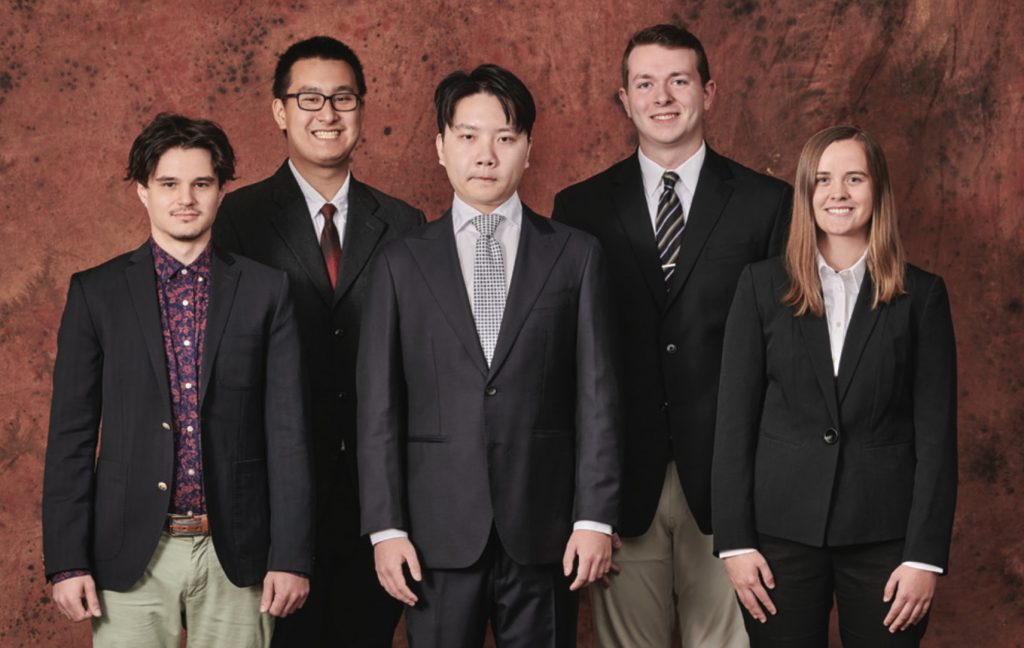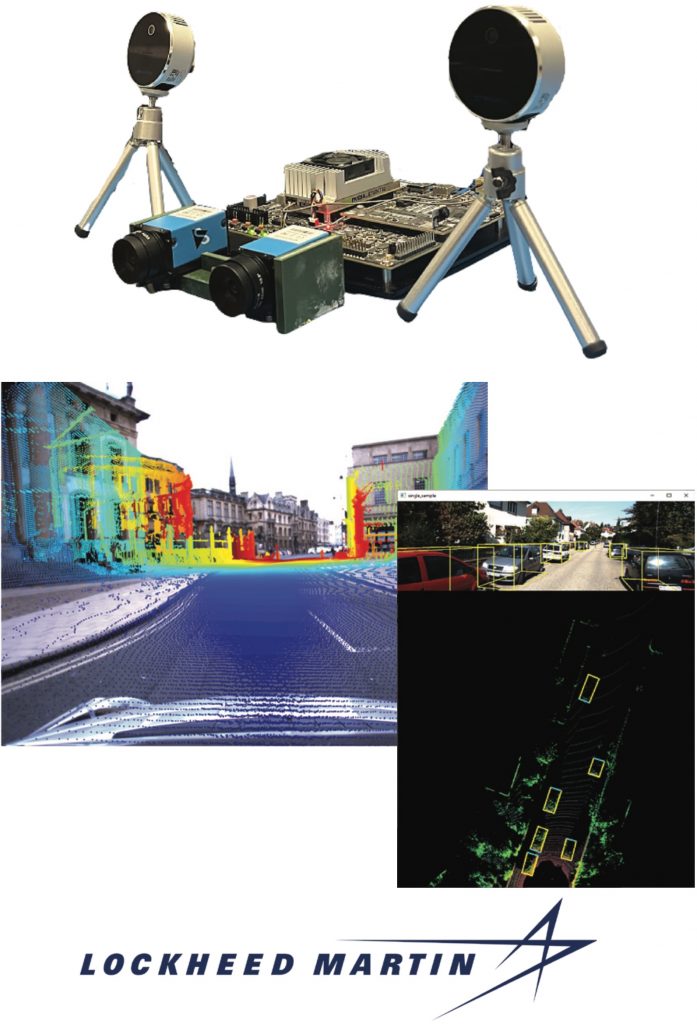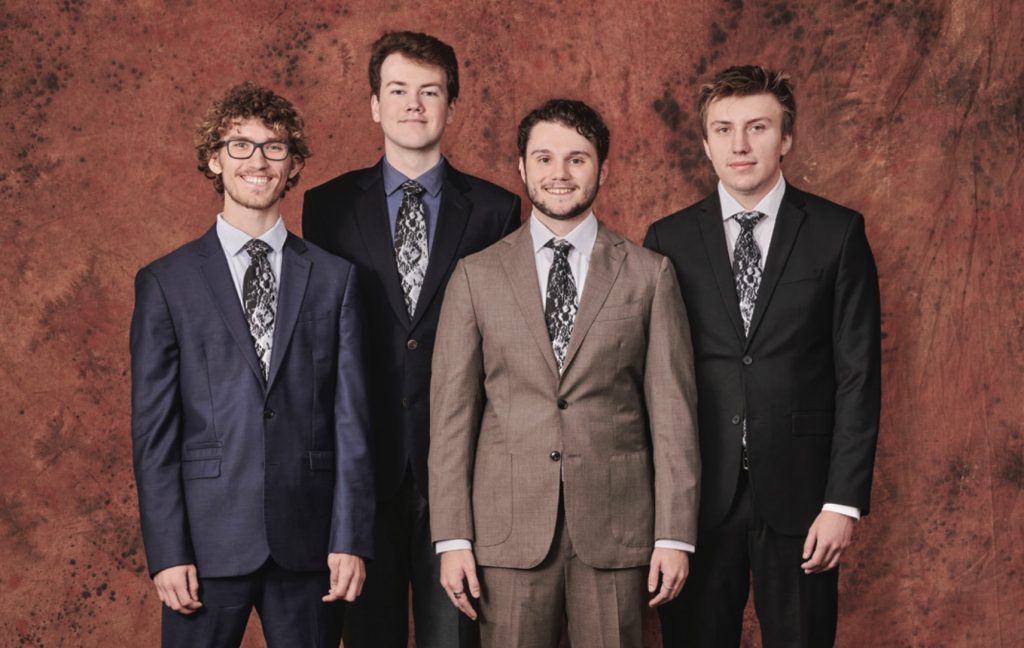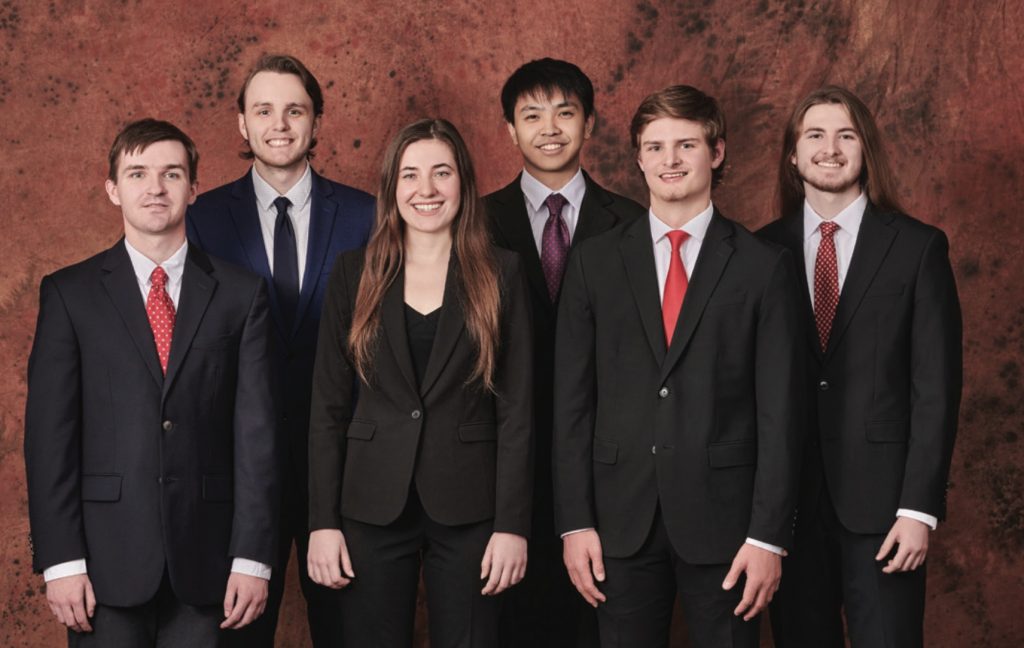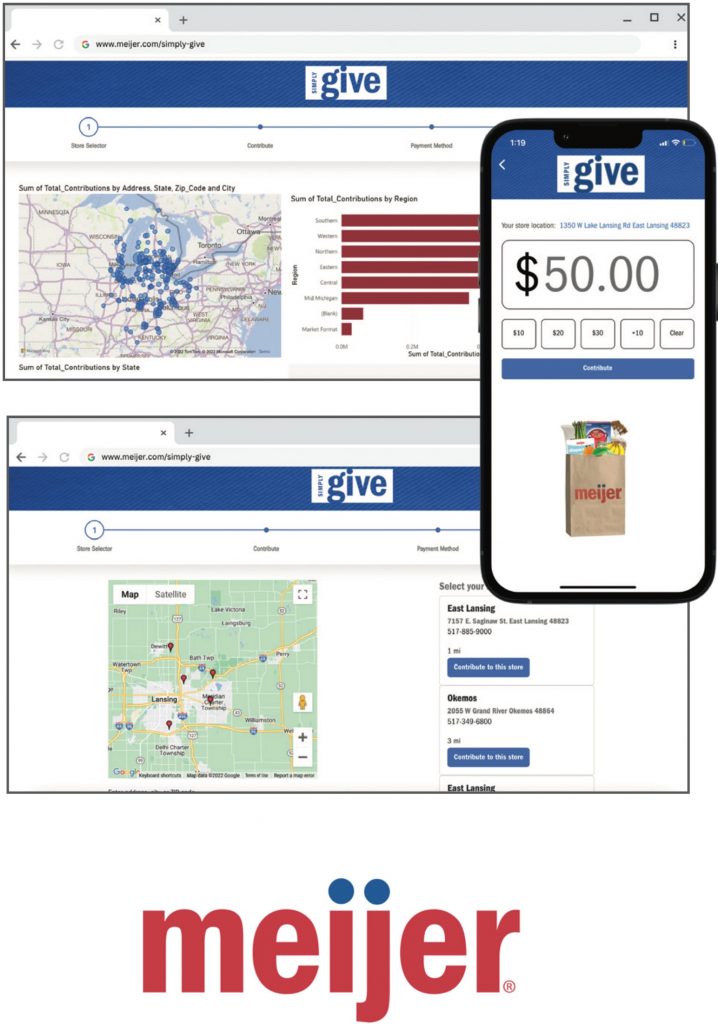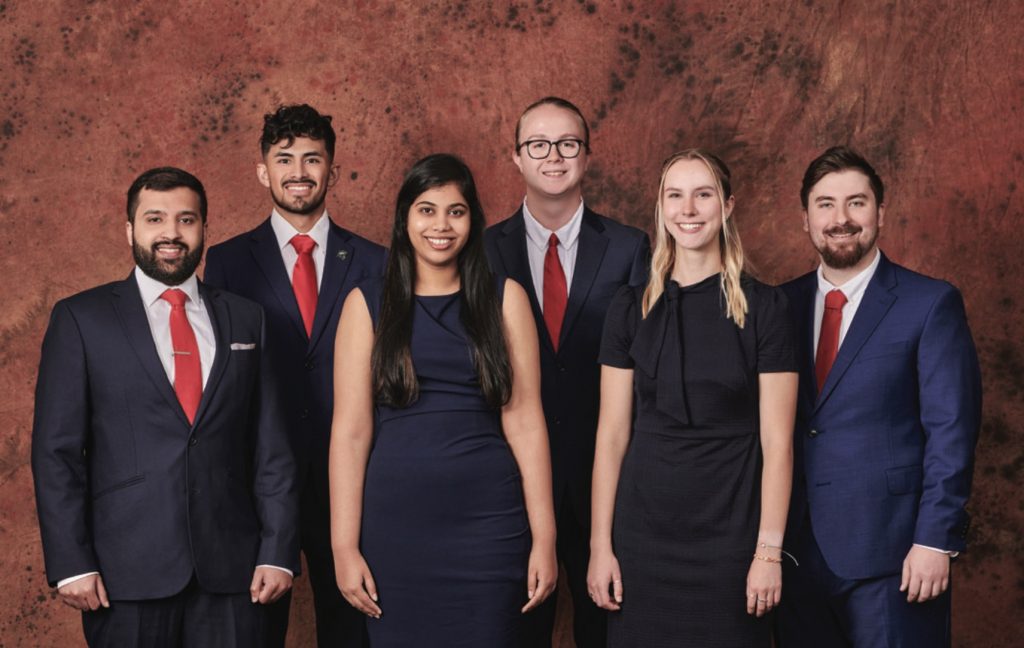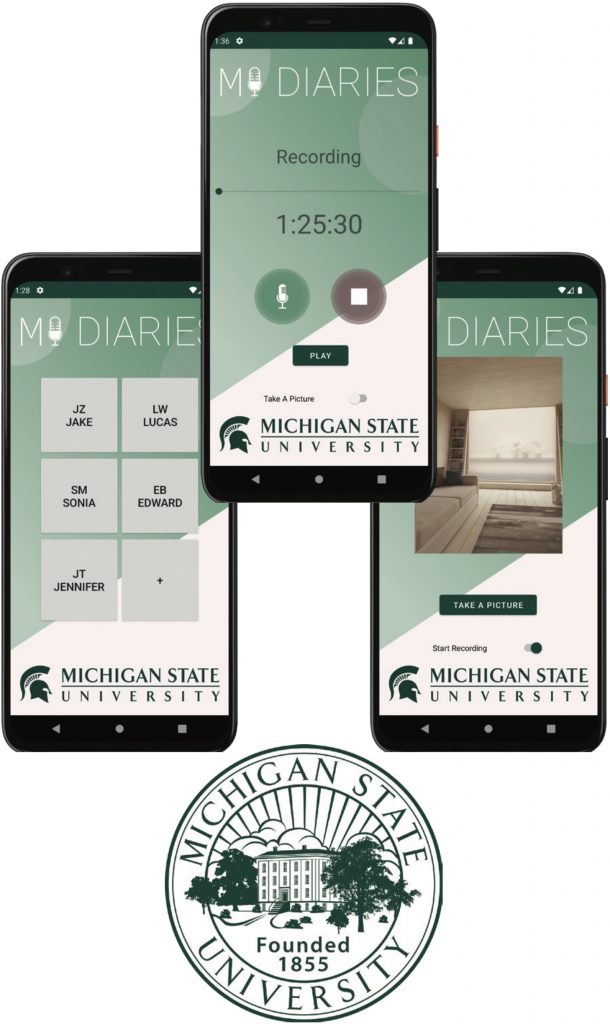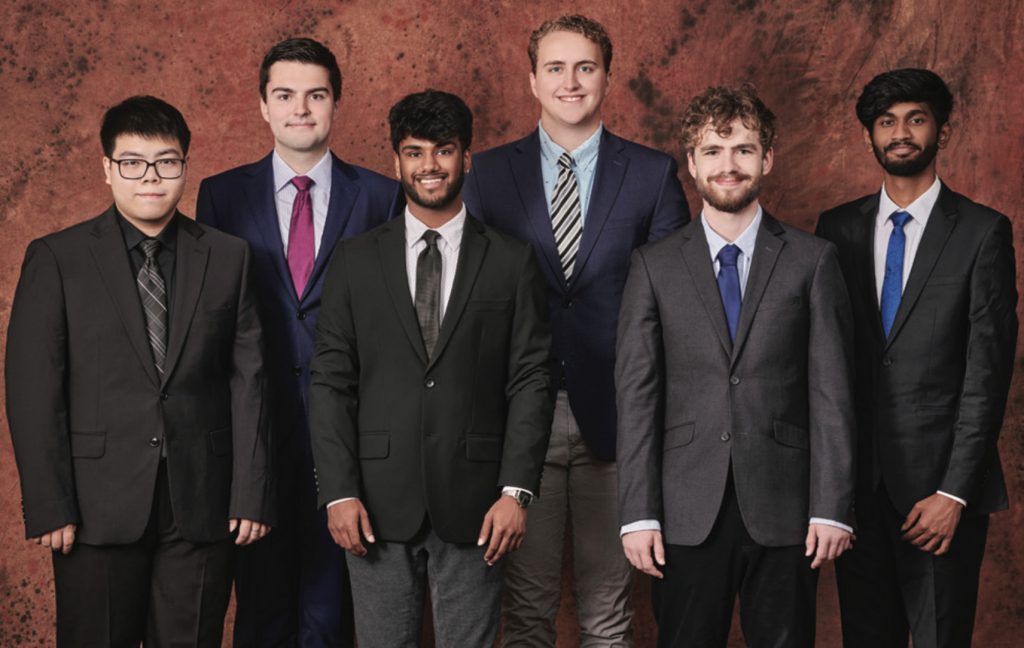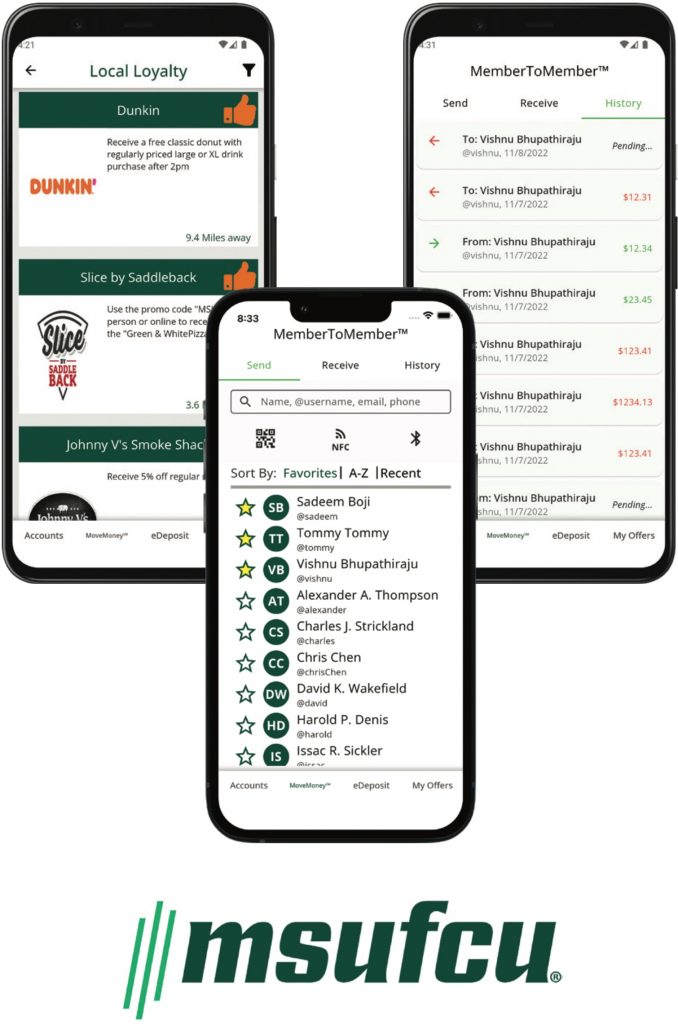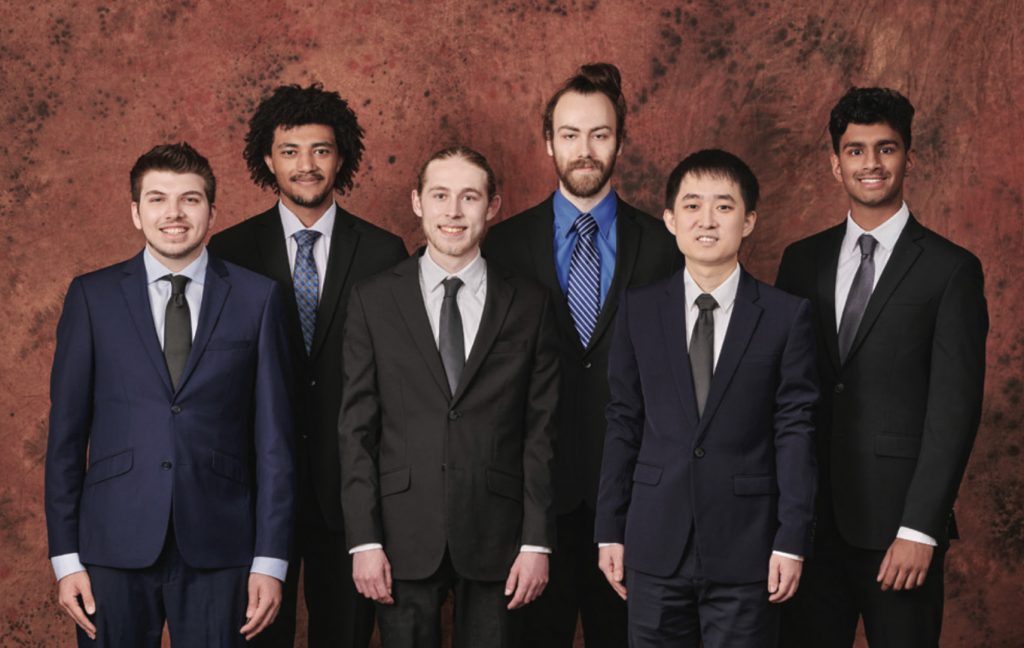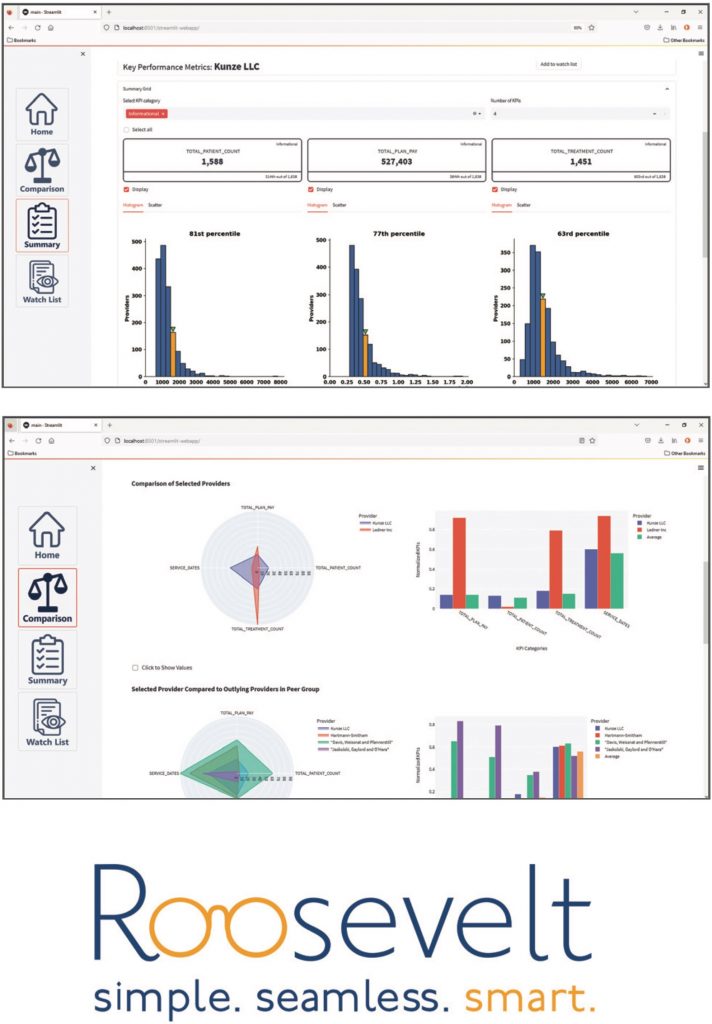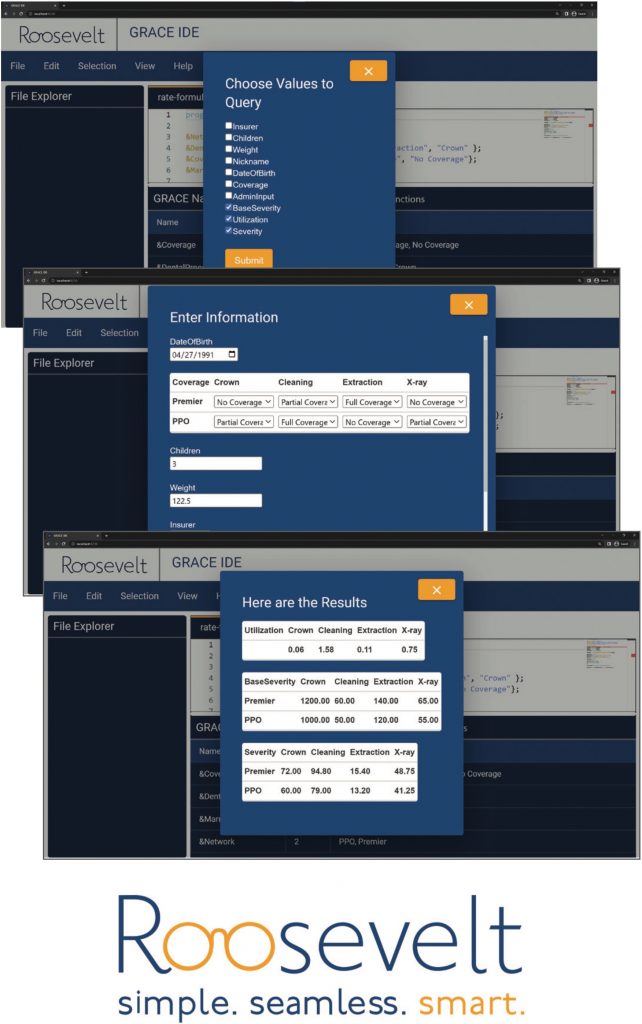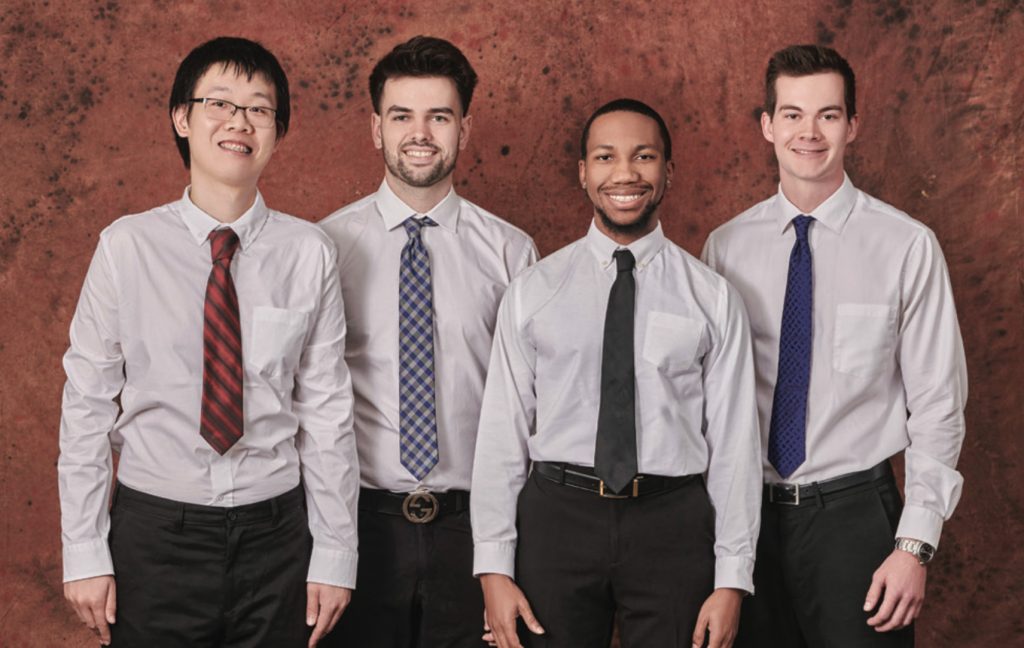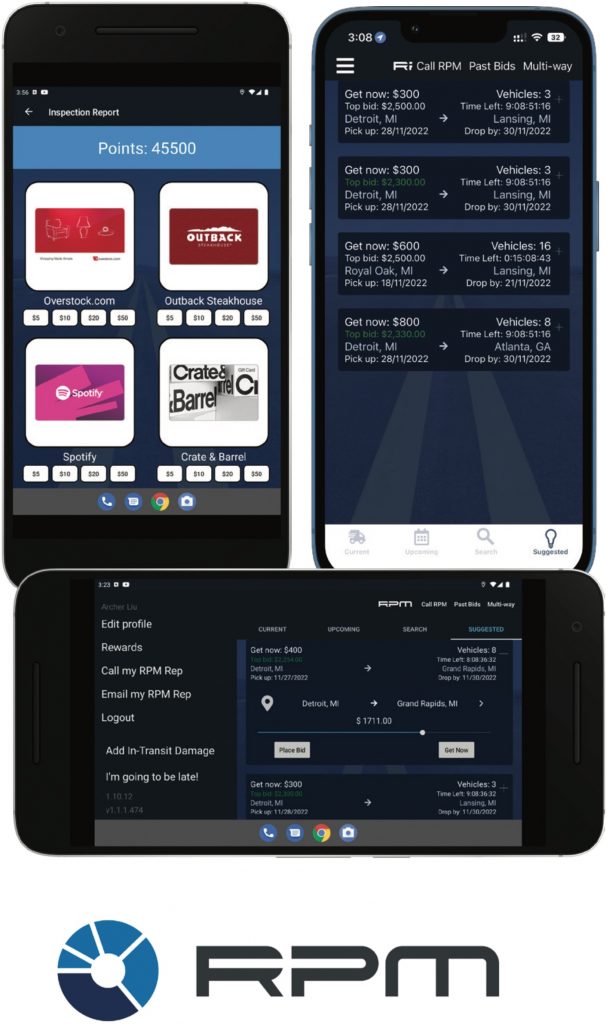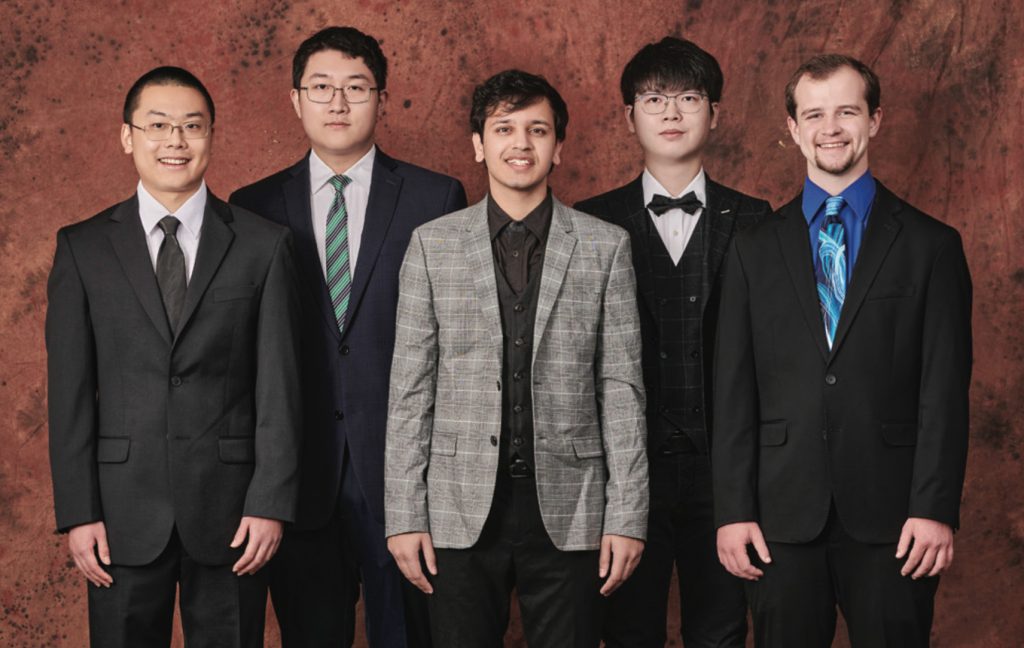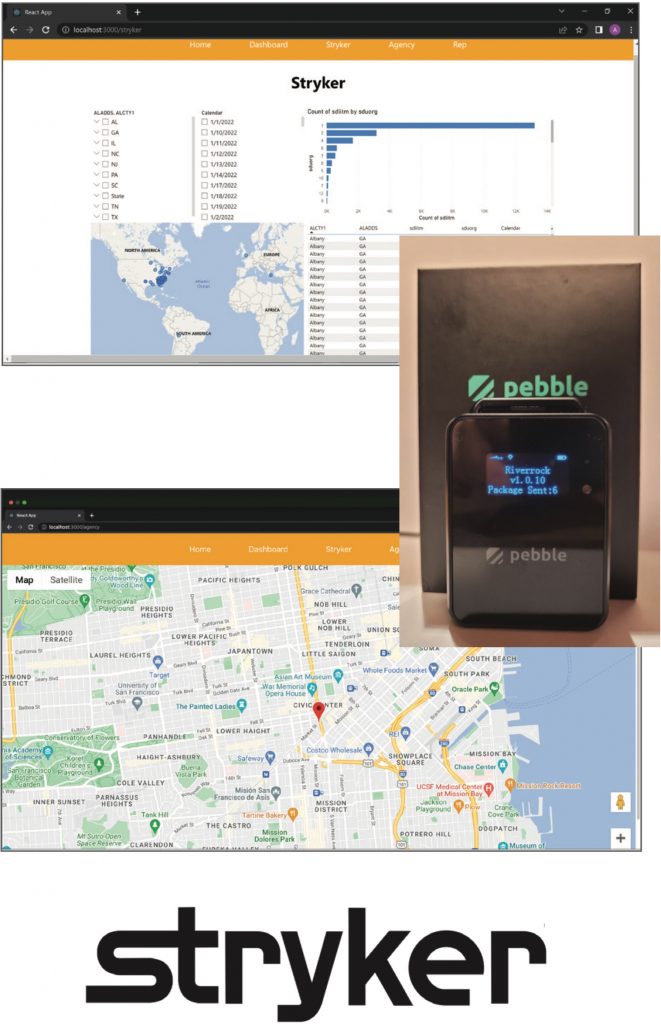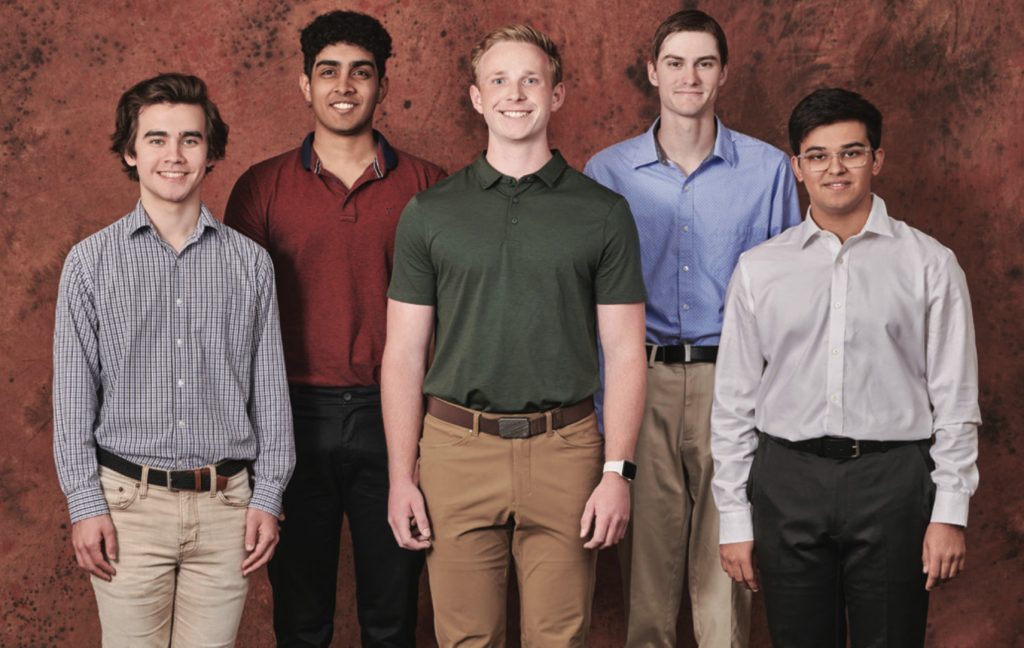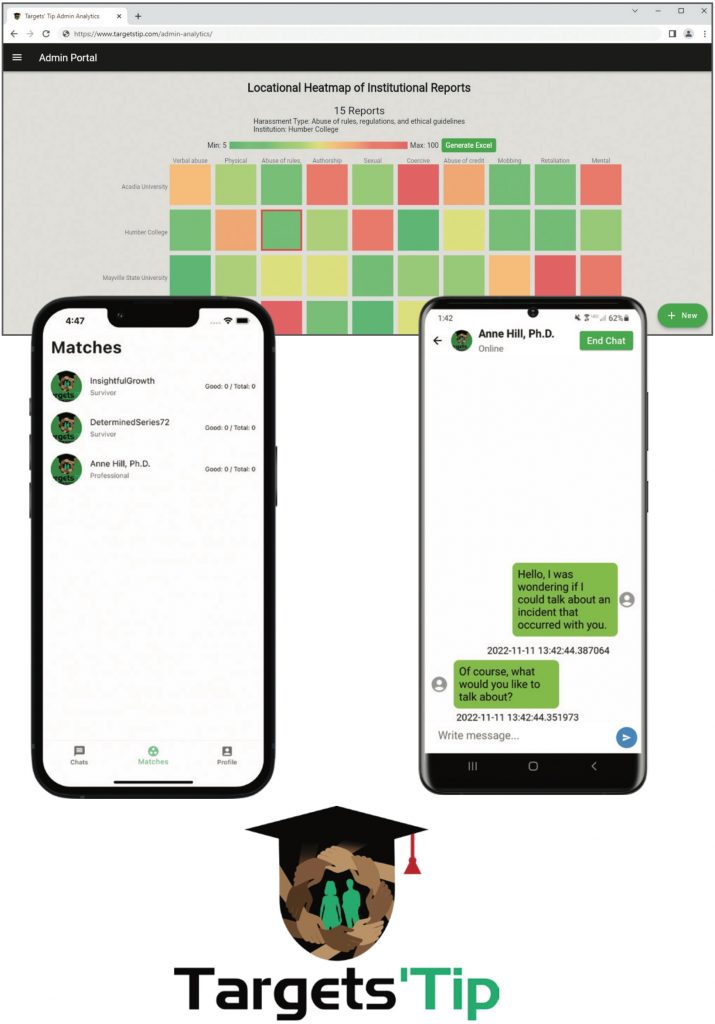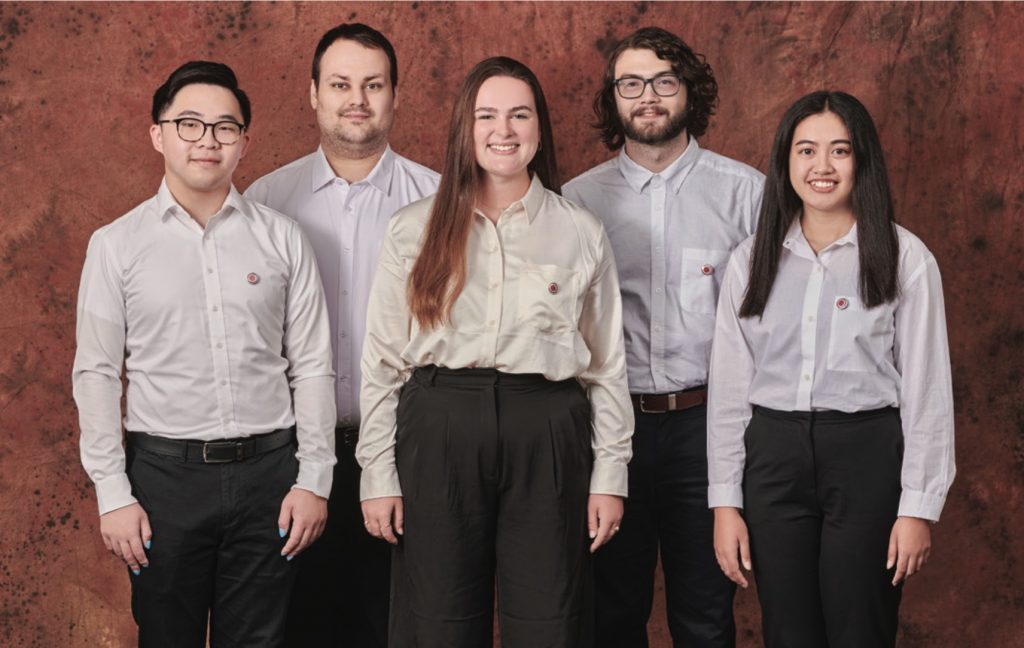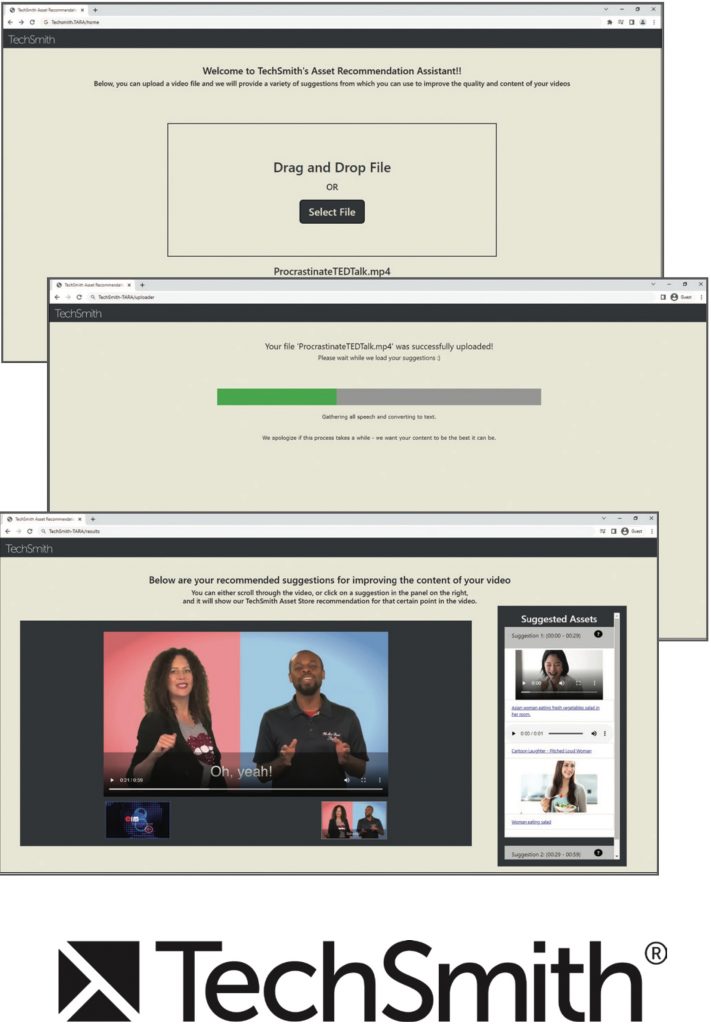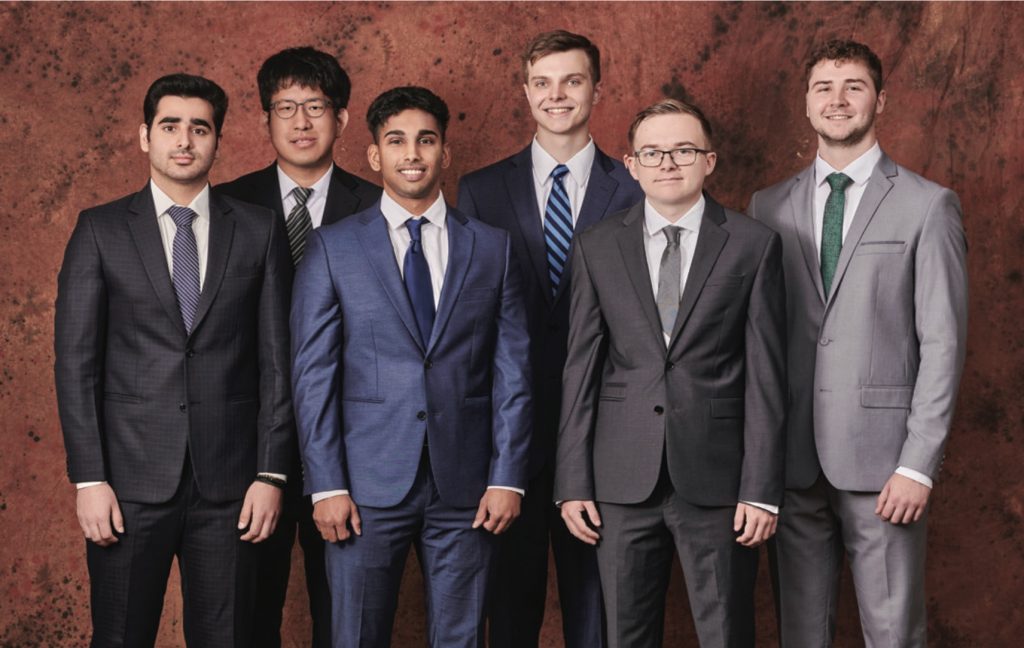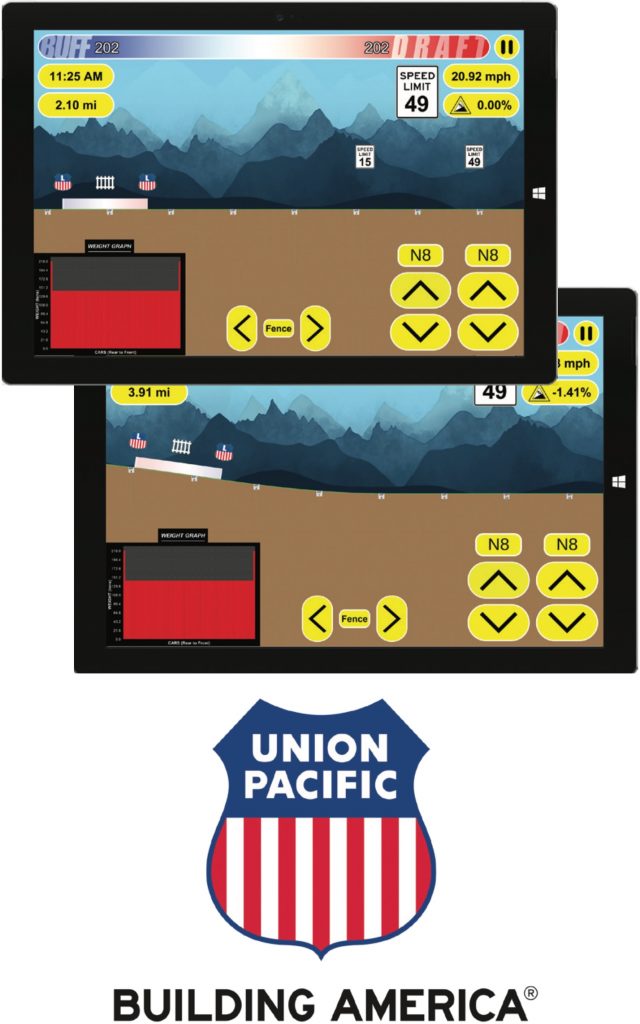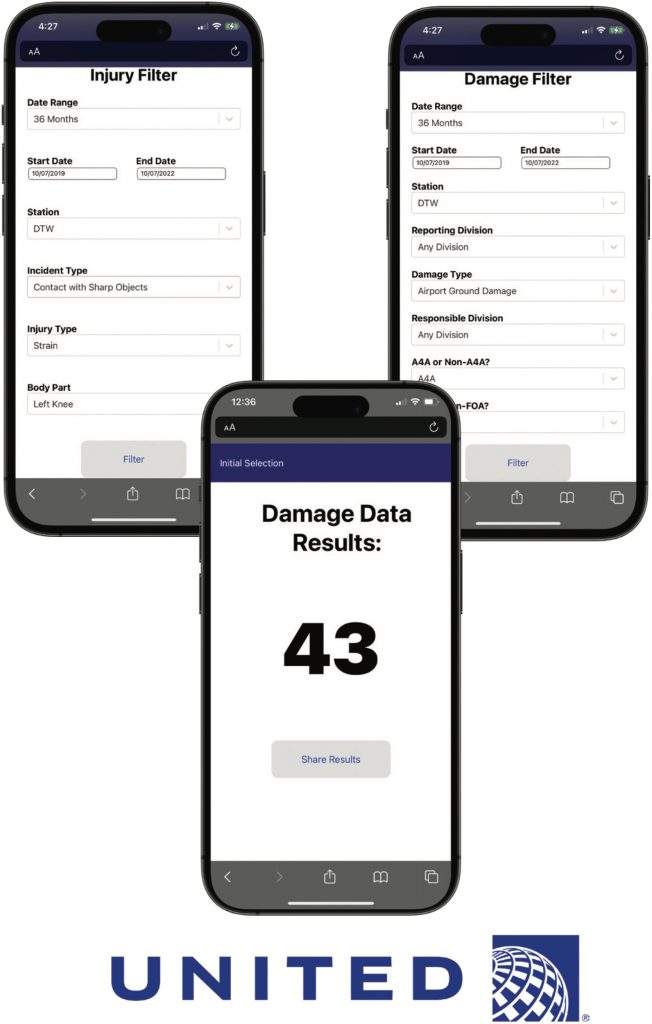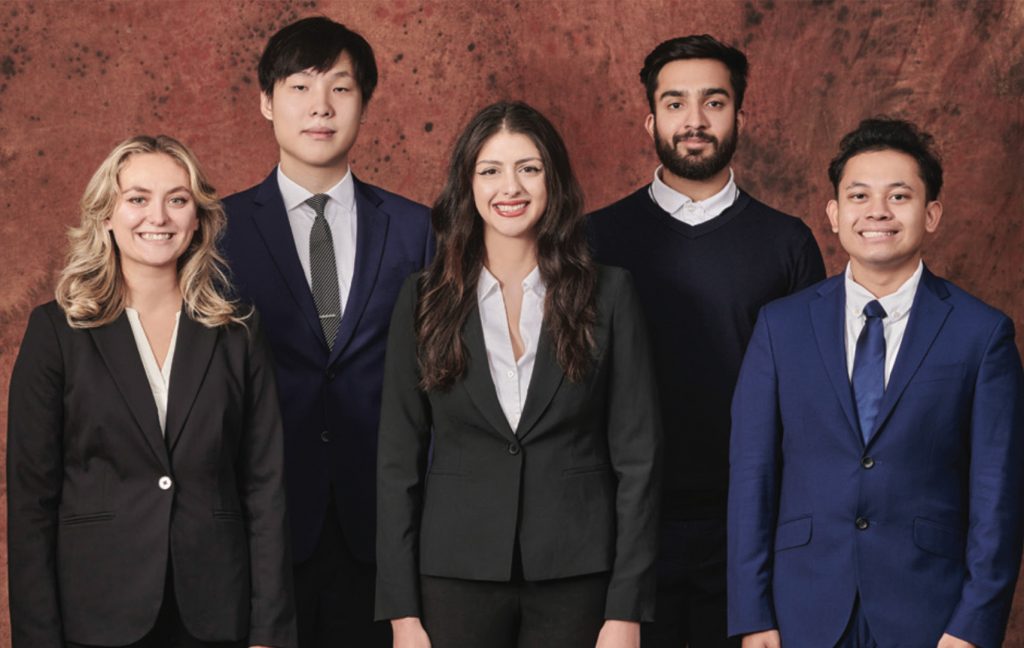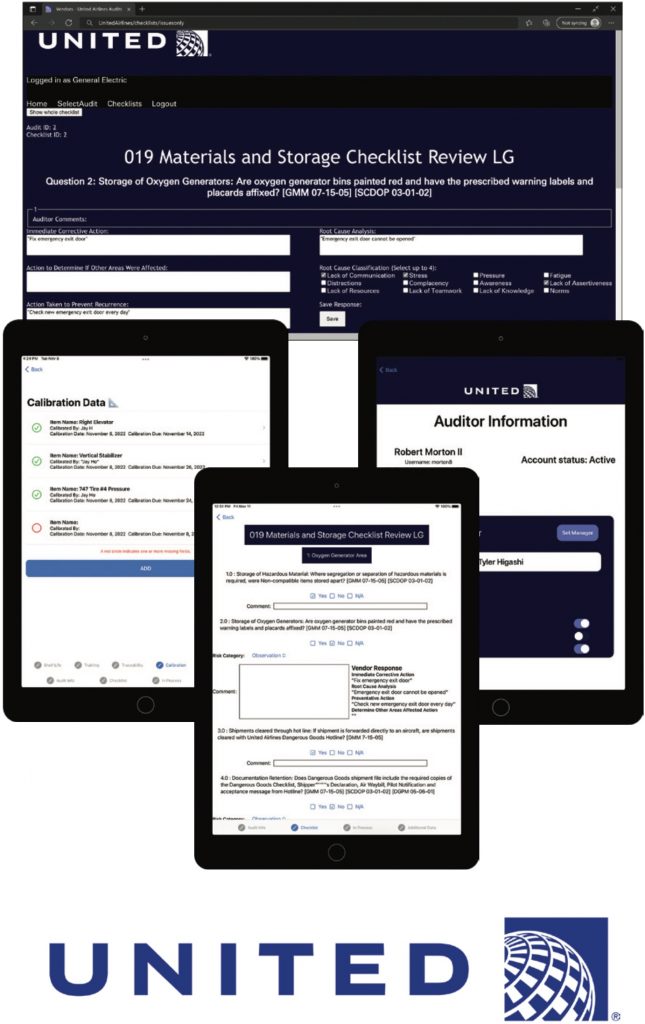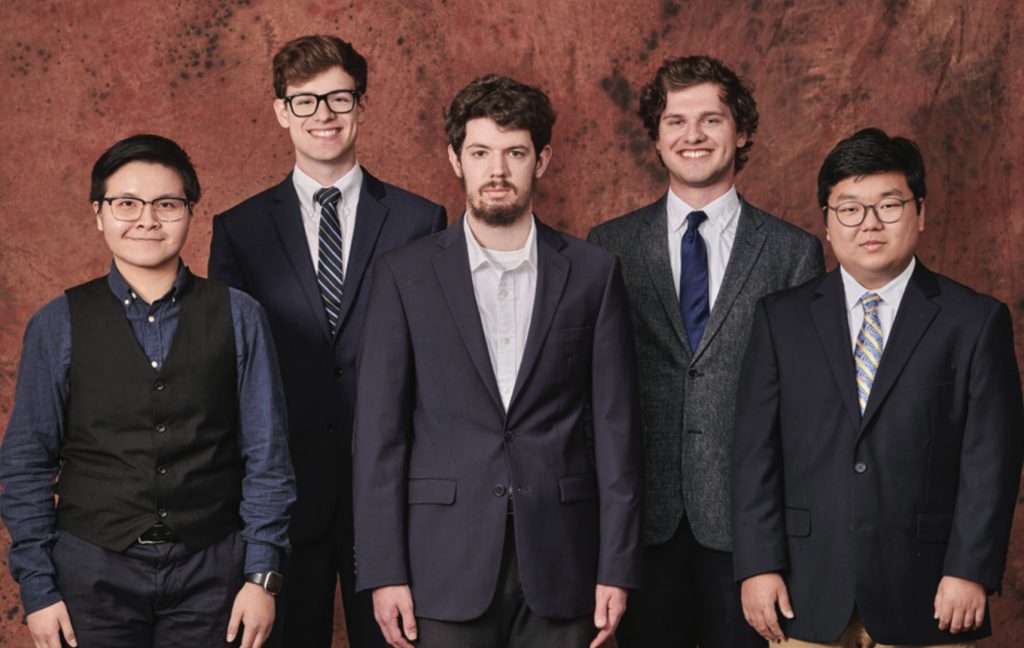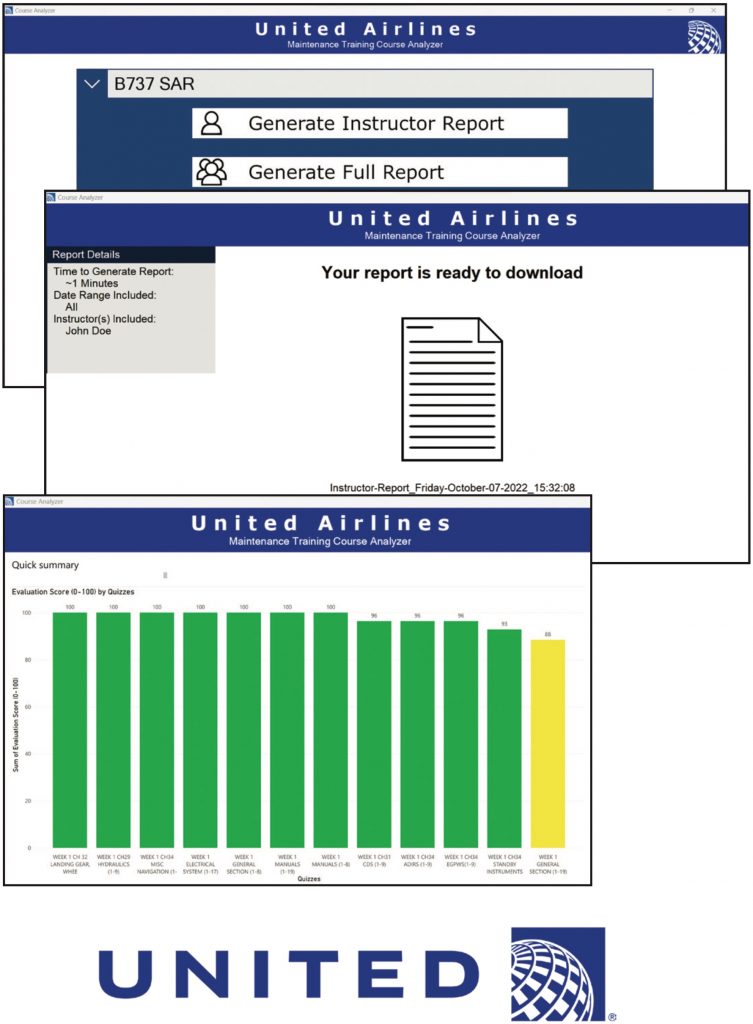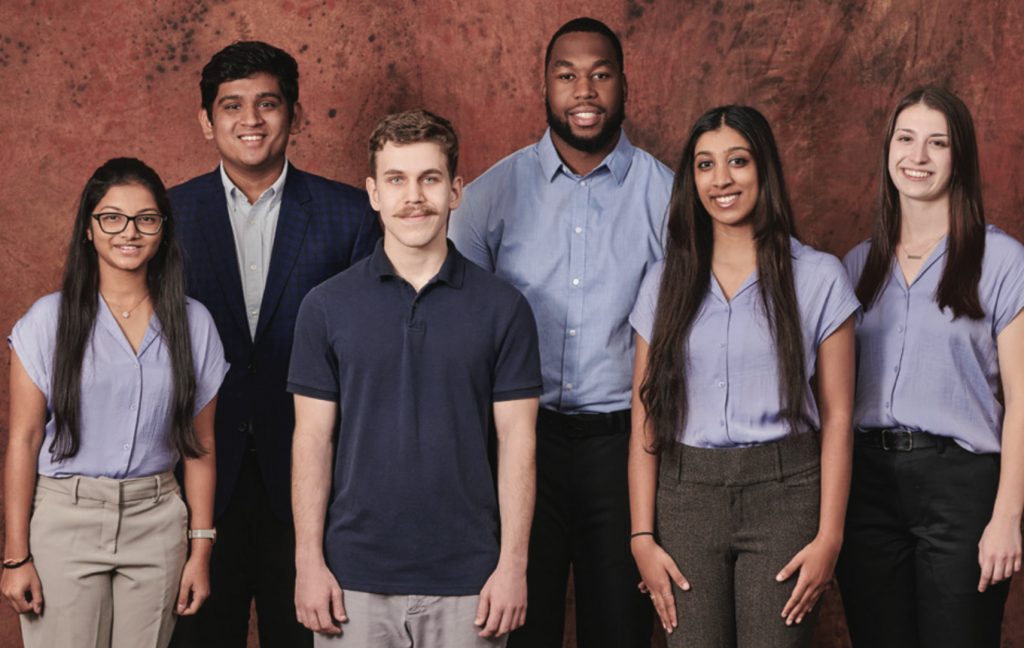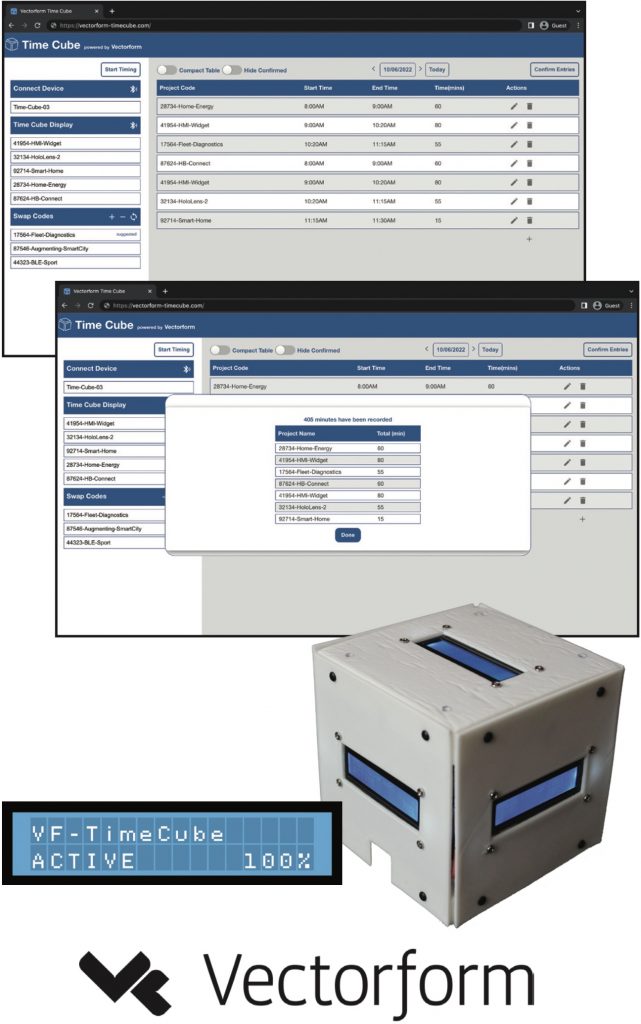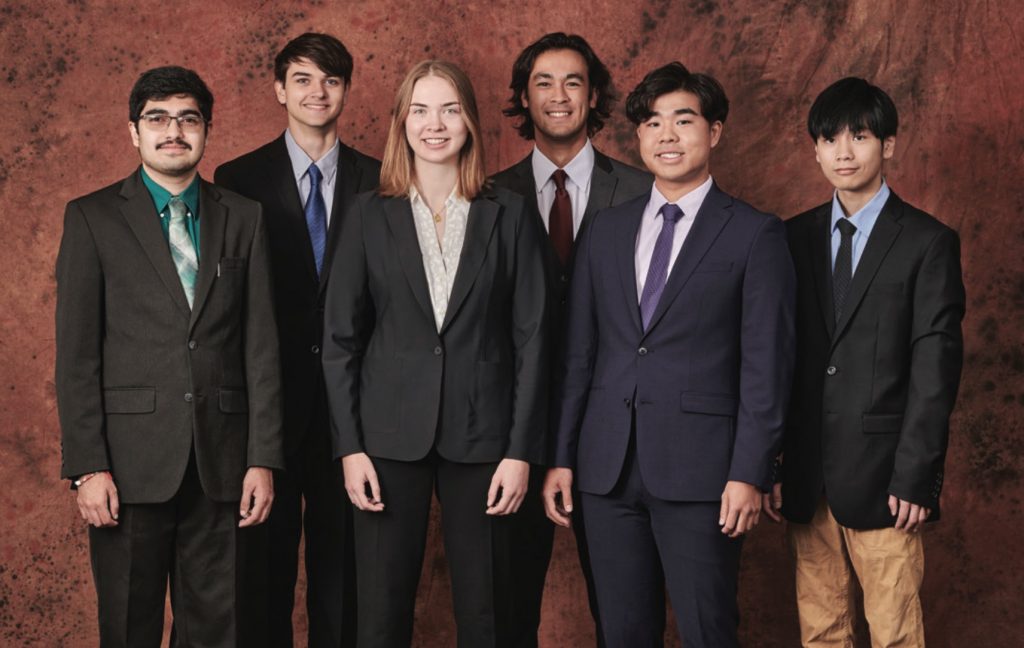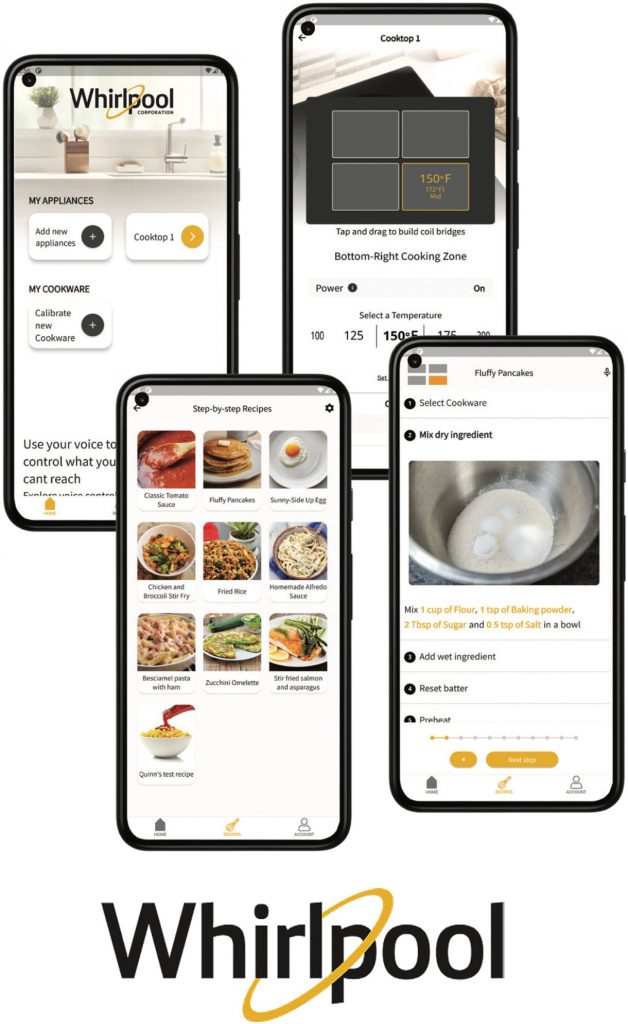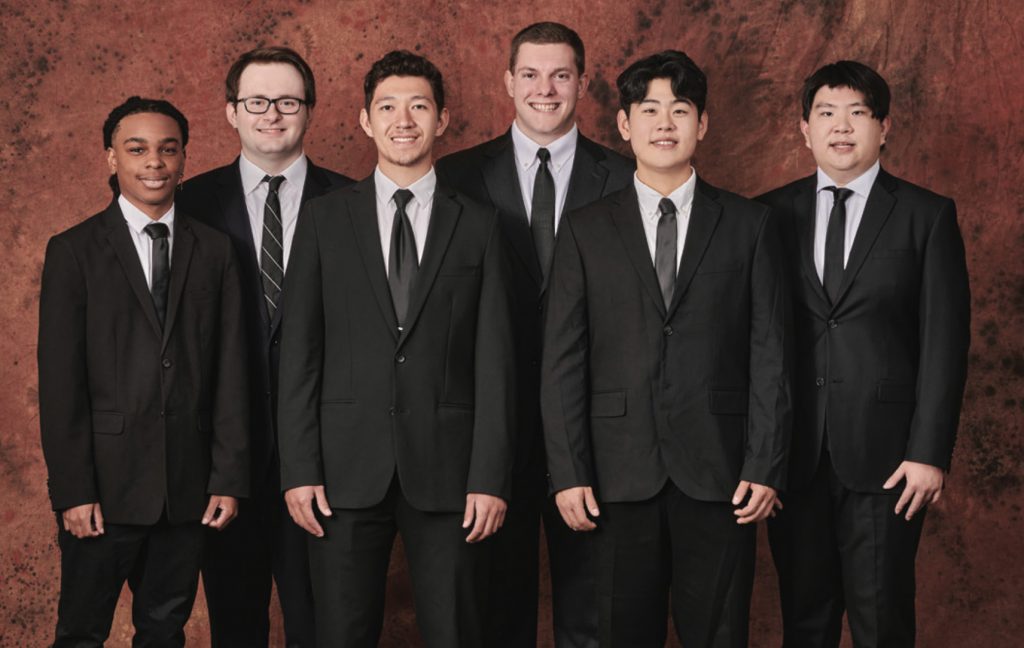Ally Financial: Ally Employee Recognition Platform
Amazon: Amazon Review Confidence Tool
Anthropocene Institute: Public Opinions on Nuclear Energy from Social Media
Atomic Object: Custom Data Visualization Dashboard
Auto-Owners Insurance: A-O Merch Search
CSAA Insurance Group: Synthetic Image Generation via Random Noise
General Motors: Augmented Reality Utilizing IoT Technology
Google: Android Exploit Fuzzing Analysis
Kellogg’s: Templatize R Development via Design Thinking
Kohl’s: Backstage’s Back Alright
Lockheed Martin Space: LiDAR and Image Fusion for Autonomous Navigation
Magna: Dashboard for Data Visualization
Meijer: Meijer Simply Give Automation
Michigan State University: Mobile App for Remote Recording
Microsoft: Making STEM Papers Accessible to ASL Users
MSU Federal Credit Union: Digital Transformation of Member Data
Roosevelt Innovations: Provider Anomaly Analytics Toolkit
Roosevelt Innovations: DSL IDE Test Harness
RPM: RPM DriveTM Mobile App Extension and Enhancements
Stryker: Technology Driven Inventory Optimization
Targets’ Tip: Sharing Advice on Academic Harassment
TechSmith: TARA: TechSmith Asset Recommendation Assistant
Union Pacific: Mobile Train Handling Simulator
United Airlines: Data on Demand App
United Airlines: Audit Management System
United Airlines: Efficacy Testing within United’s Cornerstone LMS
Urban Science: Dealership Parts and Service Telematic Insights
Vectorform: Time Cube
Volkswagen Group of America: Volkswagen Electric Vehicle Recommender App
Whirlpool Corporation: Guided Recipe Augmentation
Ally Financial: Ally Employee Recognition Platform
Headquartered in Detroit, Michigan, Ally is one of the top 25 financial holding companies in the United States and a leader in digital financial services. Ally offers financial products for consumers, businesses, automotive dealers, and corporate clients in their commitment to developing platforms and digital experiences for a variety of needs.
Ally takes pride in their organization culture. They believe the ability to influence change comes from the people and community that are found within their business. Ally puts a strong emphasis on such company values so their employees continue to flourish from the positive impact of a healthy work environment.
Ally employees use our web application, Ally Kudos, as an intuitive way to strengthen the connections among coworkers. Employees log into Ally Kudos to send recognitions and ‘Kudos’ points to their coworkers. Kudos can be sent for anything ranging from a coworker sharing their hot chocolate to someone giving guidance and training to a less experienced coworker.
Our application shows users their messages sent and received over time along with their current Kudos points, which they can redeem for rewards. When sending Kudos, users type a personalized message or use suggested phrases for ideas. With added touch-ups to the message such as gifs and text styles, our application offers a more fun and rewarding
experience that improves upon basic thank-you emails.
Having pleasant interactions between one another boosts company
morale and overall productivity. Ally Kudos enhances the appreciation Ally employees share with one another.
Ally Kudos is written in HTML, CSS and JavaScript and is powered by the React framework. Our web app interacts with employee data using Sequelize and Express to connect to AWS RDS and offers machine learning capabilities using Python.
Michigan State University
Team Members (left to right)
Phillip Yu
Canton, Michigan
Abby Peterson
Midland, Michigan
Gatesana Vongphachanh
Lansing, Michigan
Harrison McComb
Oakland, Michigan
Phumapiwat Chanyutthagorn
Bangkok, Thailand
Ally
Project Sponsors
Jared Allmond
Detroit, Michigan
Dzmitry Dubarau
Charlotte, North Carolina
Dallas Gale
Phoenix, Arizona
Dan Lemont
Detroit, Michigan
Harish Naik
Phoenix, Arizona
Susan Nord
Detroit, Michigan
Arvy Rajasekaran
Charlotte, North Carolina
Theresa Weaver
Detroit, Michigan
Kevin Werner
Charlotte, North Carolina
Amazon: Amazon Review Confidence Tool
Amazon, founded by Jeff Bezos in July 1994, is renowned for its influence in the electronic commerce industry. Amazon initially started as an online marketplace for books but quickly expanded into a multitude of product categories and is currently one of the world’s largest online retailers.
With over 300 million active customers interacting with their online platform, Amazon is trying to ensure that users have the most authentic, reliable, and trustworthy shopping experience. To safeguard their product standards, Amazon has developed a review framework in which customers can get insights and feedback on products while shopping. However, with the multitude of reviews, there is an ever-growing problem of review legitimacy.
Our Amazon Review Confidence Tool combats this legitimacy problem by conducting product review analysis to calculate review authenticity within a visually intuitive browser extension and web application.
Users have access to a browser extension that displays confidence scores for each review of a selected product. The Review Confidence Tool then calculates an adjusted total average rating after filtering reviews with low confidence scores, enabling users to get a more accurate rating without low legitimacy reviews.
The tool is also equipped with a web application that provides a visually intuitive summary of review authenticity. This solution reduces customer confusion and preserves sellers’ reputations within two easy-to-use applications.
The tool’s infrastructure is built entirely on Amazon Web Services, referencing the AWS Well-Architected Framework to create a responsive and scalable environment. The serverless web app uses AWS Amplify, Lambda, and DynamoDB to minimize unnecessary overhead, and Amazon SageMaker is the tool’s all-in- one solution to machine learning.
Michigan State University
Team Members (left to right)
Ashu Kher
Canton, Michigan
Collin Cole
Grand Rapids, Michigan
Nikita Gupta
Johannesburg, Gauteng, South Africa
Cameron Hurley
Brighton, Michigan
Ethan Strain
Rochester, Michigan
Dylan Mccarroll
Warren, Michigan
Amazon
Project Sponsors
Jacob Ackley-Smith
Detroit, Michigan
Zach Arnold
Detroit, Michigan
Garret Gaw
Detroit, Michigan
Derek Gebhard
Detroit, Michigan
Mitchell Morrell
Detroit, Michigan
Anthropocene Institute: Public Opinions on Nuclear Energy from Social Media
The Anthropocene Institute is an organization that partners with researchers, governments, experts, and investors to address the climate change crisis. The organization provides support to projects related to clean energy, anti-pollution efforts and climate innovation and takes care of any political or financial barriers they may experience.
The Anthropocene Institute is an advocate for nuclear energy as it has the potential to play a crucial role in the fight against climate change and the transition to clean energy. However, the public is divided when it comes to this energy source. Furthermore, public debate on this issue is often plagued with misinformation and confusion.
Our Nuclear Energy Web Application tackles this problem by providing users with an easy way to view public opinion on nuclear power with easy-to-read charts and graphics within one simple web application.
Our application collates and analyzes public opinion information from social media posts on Twitter. This information is presented on an attractive dashboard, which provides users with several easy-to-use web pages of data visualizations.
Users can see geographic trends in opinion using an interactive map that illustrates opinion in each state. The dashboard also contains several charts and graphs to help visualize more general data. The dashboard is updated constantly ensuring all data is fresh and up to date.
Through this application, the Anthropocene Institute can utilize a constant flow of formatted, visualized data to further their mission of creating a better, greener world.
The front end is built using HTML, JavaScript, React and the Google Charts Library. The back end is built using Python, Google Cloud Platform and the Twitter API.
Michigan State University
Team Members (left to right)
Doyeon Kim
Novi, Michigan
Akshit Bansal
Delhi, India
Aidan Lane
Kalamazoo, Michigan
Grant Carey
Columbus, Ohio
Katherine White
Midland, Michigan
Shrey Jindal
New Delhi, India
Anthropocene Institute
Project Sponsors
Frank Ling
Tokyo, Japan
Carl Page
Palo Alto, California
Atomic Object: Custom Data Visualization Dashboard
Atomic Object is a custom software design and development consultancy that builds mobile and web apps, creates device IoT software, and provides cloud capabilities to their clients. They are an employee-owned organization with branches in Ann Arbor, Chicago, and Grand Rapids.
Each Atomic Object office has a dashboard displayed on a television. This dashboard highlights important individual employee metrics such as billable hours and employee blog-post due dates. This dashboard is essential to keep track of employee metrics, but it is currently outdated and needs to be reworked to increase efficiency.
Our Custom Data Visualization Dashboard enables users to view this important employee data more easily and effectively than ever before within a new, attractive application.
This dashboard includes blog post deadlines and billable hours, and many other components including an events calendar, trending blog posts, and charts highlighting revenue and utilization rates.
Our admin page enables Atomic Object employees to customize each office’s dashboard separately. Employees can edit a dashboard by turning on and off displays as they choose. The admin page provides a few preset combinations to display components from specific categories.
The built-in presets include Financial, which shows the financial metrics, and Social, which includes company events and an employee spotlight. The Default preset shows a combination of the two. Employees may save their edits as new presets to make changing visualizations easy.
Our dashboard is a React application that uses HTML/CSS, JavaScript, and Bootstrap for the front end. For the back end, we combine internal data from Atomic Object pushed to our Firebase database with Google Sheets data and user preset information.
Michigan State University
Team Members (left to right)
Chandan Aralikatti
Okemos, Michigan
Neil Warraich
Novi, Michigan
Abigail Murray
Dearborn, Michigan
Frank Nylander
Grand Ledge, Michigan
Wenrui Li
Taishan, Guangdong, China
Atomic Object
Project Sponsors
Micah Alles
Grand Rapids, Michigan
Jonah Bailey
Ann Arbor, Michigan
Dylan Goings
Ann Arbor, Michigan
Auto-Owners Insurance: A-O Merch Search
Auto-Owners Insurance is a Fortune 500 mutual insurance company that provides automotive, home, life and commercial insurance to nearly 3 million policyholders in 26 states. Auto- Owners Insurance is headquartered in Lansing, Michigan.
Auto-Owners offers company merchandise that their associates can purchase to support and represent the company.
Currently, the purchasing process revolves around paper and pencil order forms. Similarly, when an Auto-Owners administrator wants to analyze purchase data, they must parse the paper records manually, which can be a daunting task.
Online shopping has become increasingly popular in the last decade, providing a better shopping experience for consumers and an easier way to keep track of purchase data. Auto-Owners is looking for a way to modernize their ‘merch’ shopping experience.
Our A-O Merch Search is a web application that functions as an online store and improves the process of purchasing company merchandise for Auto-Owners associates. In addition to purchasing items, associates have the option to read and write reviews for items and view recommended items to help them choose a product that best suits their needs.
Auto-Owners associates use our system to filter, browse and purchase company merchandise from their personal devices using any browser. Purchase history data updates as orders are placed, enabling administrators to see real-time trends for popular items and categories.
Our system improves the efficiency of analyzing purchase data for Auto-Owners administrators by generating relevant graphs and charts. Our A-O Merch Search system uses React for the front end, Spring Boot for the back end, and Microsoft SQL Server for hosting the
database.
Michigan State University
Team Members (left to right)
Samuel Ward
Kentwood, Michigan
Tyler Gyulveszi
Belleville, Michigan
Caroline Gormely
Grosse Pointe Farms, Michigan
John Lin
Rochester Hills, Michigan
Yuzhen Zhou
Shenzhen, Guangdong, China
David Sugai
Ann Arbor, Michigan
Auto-Owners Insurance
Project Sponsors
Tony Dean
Lansing, Michigan
Ross Hacker
Lansing, Michigan
Scott Lake
Lansing, Michigan
CSAA Insurance Group: Synthetic Image Generation via Random Noise
CSAA Insurance Group, headquartered in Walnut Creek, California, is one of the largest AAA insurers in the country. They offer home, auto, and other lines of insurance to seventeen million people in twenty-three states and the District of Columbia.
In the span of a few short years, the insurance industry has become information driven, meaning CSAA requires large quantities of data to compete. However, data is difficult to access due to how it is typically captured, privacy concerns, and the relative infrequency of losses.
Our Synthetic Image Generation via Random Noise system provides an easy-to-use web application for CSAA data scientists to generate realistic image datasets. Our robust system is able to generate an image dataset for any subject of interest while eliminating privacy concerns, as the generated images are completely synthetic and do not depict any real people or vehicles.
Our application is a one-stop shop for all dataset generation needs. Users submit a text description of the images to generate, select the number of images desired, and quickly receive the dataset.
In addition to generating useful synthetic datasets, our system enables CSAA data scientists to update current dataset generators, as well as create new synthetic image generators quickly and effortlessly.
CSAA data scientists use our datasets for a variety of purposes, including providing concern-free data to CSAA’s third-party partners, improving the claims process for losses without documentation, and general insurance data needs.
Our web application utilizes Python Flask along with HTML, CSS, and JavaScript. The Stable Diffusion and Glide Diffusion models that our software uses are trained and run in Amazon Web Services EC2 instances with dedicated GPUs. The resulting datasets are stored in an AWS S3 Bucket.
Michigan State University
Team Members (left to right)
John Park
Troy, Michigan
Joe Romain
Plymouth, Michigan
William Long
Lansing, Michigan
AJ Bensman
Cincinnati, Ohio
Zongyuan Li
Shijiazhuang, Hebei, China
Matthew Baxter
Lansing, Michigan
CSA Insurance Group
Project Sponsors
Beti Cung
Walnut Creek, California
Anthony Duer
Walnut Creek, California
JD Sanchez
Walnut Creek, California
General Motors: Augmented Reality Utilizing IoT Technology
General Motors is one of the top automotive manufacturers, selling over 6 million vehicles annually worldwide. GM is headquartered in Detroit, Michigan, and is known for brands such as GMC, Buick, Chevrolet and Cadillac.
As augmented reality becomes more accessible to large companies, new ways of utilizing this technology emerge, from remote training to visualizing 3D models in real time. GM has explored many possible corporate implementations of augmented reality, yet one unexplored area is augmented reality interacting with hardware.
Our Augmented Reality Utilizing IoT (Internet of Things) Technology is an augmented reality headset that facilitates virtual interaction with the physical world. Our system employs the headset as a replacement for a physical key allowing access into restricted areas and content.
When a user needs access to a locked container, they put on the headset and open our application. A holographic button is displayed directly in front of the user that shows the status of the physical lock.
Once the button is pressed, the lock receives a signal to unlock, and the holographic button reflects this new status. Inside the container is a physical QR code that the headset scans. This QR code generates a hologram in the visual field of the headset to instruct the user in completing their task (shown on the right).
Our software integrates augmented reality with physical devices and demonstrates the viability of augmented reality and its uses for General Motors.
Our front end consists of an Unreal Engine 4.27.2 program running on a Microsoft HoloLens 2. The back end is a Flask server hosted on a Raspberry Pi. The server controls a Servo motor that is connected to a sliding deadbolt.
Michigan State University
Team Members (left to right)
Connor Pangle
Troy, Michigan
Kaezar Leonard
Detroit, Michigan
Sarah Palmer
Lexington, Kentucky
Ian Hay
Brighton, Michigan
Anthony Salem
Sterling Heights, Michigan
Ningshu Li
Changsha, Hunan, China
General Motors
Project Sponsors
Brian Chubick
Austin, Texas
James Currie
Detroit, Michigan
Kade Hasenfus
Detroit, Michigan
Fred Killeen
Detroit, Michigan
Jennifer Nickrand
Detroit, Michigan
Tyler Osterhoff
Detroit, Michigan
Steven Powell
Detroit, Michigan
Spencer Searle
Detroit, Michigan
Chris Shunk
Detroit, Michigan
Google: Android Exploit Fuzzing Analysis
Google is a Fortune 500 technology company headquartered in Mountain View, California. It specializes in creating connected products such as its search engine, smart devices, and advertising services. One of its most widespread products is the Android mobile operating system, which runs on upwards of 3 billion devices worldwide.
Due to the vast number of Android devices currently in use, Google needs to guarantee optimal performance and quality in their software. To achieve this goal, Google developed a bug detection tool called Syzkaller. This tool uses a process known as fuzzing, which enables engineers to detect bugs by passing random inputs into the target program.
Our Android Exploit Fuzzing Analysis tool utilizes Syzkaller to test Android software for bugs and displays the metrics on an intuitive dashboard for analysis by Google professionals.
The home page of the dashboard displays a snapshot of a Syzkaller fuzzer with the intent of giving engineers an overview of fuzzer performance. This overview is complete with attractive visualizations of analyzed data in the forms of charts and graphs.
The orchestration tab enables the user to stop and start Syzkaller instances with unique configurations. Our tool also displays unusual behavior found by the fuzzer on the crashes tab.
The insights tab provides an in-depth visualization of a fuzzer’s performance, which enables engineers to find ways to improve the active fuzzers to detect more bugs. These features enable Google engineers to locate Android bugs that need to be fixed.
The back end uses a Node.js API to connect Syzkaller and the MySQL database that is hosted on the Google Cloud Platform. The API also manages Docker instances that contain Syzkaller fuzzers. The front end is written using Angular 14 and utilizes our API for the dashboard.
Michigan State University
Team Members (left to right)
Karan Singh
Canton, Michigan
Michael Umanskiy
West Bloomfield, Michigan
Catherine Xu
Novi, Michigan
Shubham Chandna
New Delhi, Delhi, India
Anurag Kompalli
Northville, Michigan
Romario Rranza
Shelby Township, Michigan
Project Sponsors
Kris Alder
Kirkland, Washington
Jon Bottarini
Austin, Texas
Shailesh Saini
Kirkland, Washington
Michael Taylor
Kirkland, Washington
Kellogg’s: Templatize R Development via Design Thinking
Kellogg’s, one of “America’s Most Trusted Brands,” is a leading producer of snacks and cereals. The Battle Creek, Michigan company produces popular items such as Pop-Tarts, Cheez-Its and Frosted Flakes with the assistance of its 31,000 employees.
Kellogg’s has a market presence in 180 countries and interacts with an abundance of customers. The Kellogg’s Global Business Services (GBS) team ensures communication between employees and customers remains mutually beneficial and accessible. The GBS team achieves this through a large suite of applications.
With many applications focused on features and use cases, it is inevitable that some of them may no longer have the official Kellogg’s look and feel.
Our Templatize R Development via Design Thinking system provides a platform to help Kellogg’s employees create new applications and update existing applications while conforming to all of Kellogg’s current design requirements.
Employees can preview and download various standardized application elements by using a series of dashboards housed on our platform. This removes the need for developers to manually confirm that they are conforming to all requirements.
Our theme-previewing system displays common webpage elements and themes, which enables developers to quickly decide on a predefined look for their next application and not worry about design standards.
Using our app, Kellogg’s employees can unite the look and feel of the GBS applications by applying consistent themes and branding material to upcoming projects and applications, thereby producing a seamless company image.
Users access the dashboards via a web app built in R, with R-Shiny for the user interface. The data is stored in MySQL, and the themes are created using CSS.
Michigan State University
Team Members (left to right)
Jonathan Shomali
Corunna, Michigan
Tolu Fashina
Ikoyi, Lagos, Nigeria
Devin Masiak
Clinton Township, Michigan
Savvy Barnes
Flint, Michigan
Matt DiRisio
Victor, New York
Kellogg’s
Project Sponsors
Deanna Adler
Battle Creek, Michigan
Jordan Brooker
Battle Creek, Michigan
Michael Chappelow
Battle Creek, Michigan
Federico Conde
Battle Creek, Michigan
Katrina Gensterblum
Battle Creek, Michigan
Alexis Janssens
Battle Creek, Michigan
Diana Morehouse
Battle Creek, Michigan
Benjamin Pineda
Battle Creek, Michigan
Kohl’s: Backstage’s Back Alright
With over $15 billion in sales, Kohl’s is the second largest department store chain in the United States. Headquartered in Menomonee Falls, Wisconsin, Kohl’s has 1,161 stores across 49 states and employs nearly 100,000 people.
Like many other retail stores, Kohl’s has had to adjust to a significant increase in online sales in recent years. This greater online presence is supported by Kohl’s software developers who work on several projects at a time, each using multiple applications.
It has become cumbersome for the software developers to manage their different projects as they navigate through all of the related applications.
Our Backstage’s Back Alright system provides a developer portal, which is a hub for the tools most frequently used by Kohl’s software developers.
There are two main functionalities in the system which provide developers a way to quickly and intuitively see the statuses of all their projects and kick-start new development projects with our easy-to- use development templates.
The system enables developers to quickly view all of the projects and related information on a single page.
Another page of our system streamlines creation of new projects. Developers simply specify what type of project they want and the programming requirements, and the system automatically creates the project, allowing developers to focus on other tasks.
TypeScript and React form the front end of our system. The back end is connected to external technologies including GitLab, Dynatrace and OpenShift.
Michigan State University
Team Members (left to right)
Blake Sabbagh
Ann Arbor, Michigan
Joey Meng
Troy, Michigan
Mike Guan
Shanghai, Shanghai, China
Gage Hohwart
Saginaw, Michigan
Miriam Oginsky
Ann Arbor, Michigan
Kohl’s
Project Sponsors
Daniel Gries
Menomonee Falls, Wisconsin
Jay Piskorik
Menomonee Falls, Wisconsin
Vinny Sabatini
Menomonee Falls, Wisconsin
Brian Sanner
Menomonee Falls, Wisconsin
Jill Simmons
Menomonee Falls, Wisconsin
Kurt Troyer
Menomonee Falls, Wisconsin
Will White
Menomonee Falls, Wisconsin
Lockheed Martin Space: LiDAR and Image Fusion for Autonomous Navigation
Lockheed Martin Space, headquartered in Denver, Colorado, employs over 16,000 people to develop satellite systems, spacecraft, and space probes.
Recently, in a partnership with General Motors, Lockheed Martin Space is endeavoring to develop a transportation solution for NASA’s upcoming Artemis mission in the form of the Lunar Mobility Vehicle (LMV).
In the LMV’s navigation of the lunar environment, an accurate sensor system is essential to ensure safe traversal. Such a sensor system has different system requirements than a typical autonomous vehicle in that it must be redundant, performant, and capable of operating in the lunar domain.
Our LiDAR and Image Fusion Solution for Autonomous Navigation enables the LMV to detect the lunar environment by providing a lightweight and redundant software solution capable of running on the vehicle’s onboard systems. By utilizing both LiDAR data and stereo-camera data, our solution accurately detects its environment. Additionally, our robust system can maintain effective operation in scenarios where a sensor fails through a redundant imaging setup.
Given the nature of the LMV, our system exists in an environment with limited computer systems and resources. Optimizing our fusion solution and underlying detection software guarantees its functionality in this restrictive environment.
In practice, our system is a network of ROS nodes, each node being a discrete computation module. Our LiDAR and stereo-image data are fused into a singular point cloud in the system and then fed through a YoloV4- based 3D object detection model for inference using the ONNX runtime. The entire system runs on an NVIDIA Jetson TX2, with Imaging-Source cameras and Intel Realsense LiDAR sensors providing data.
Michigan State University
Team Members (left to right)
Matt Anikiej
Elmhurst, Illinois
Nathaniel Ferry
Grosse Pointe, Michigan
Dom Mazza
Tampa, Florida
Carlo Barths
Bloomfield Township, Michigan
Lockheed Martin Space
Project Sponsors
Josh Davidson
Littleton, Colorado
Eric Dixon
Littleton, Colorado
Joe Epstein
Littleton, Colorado
Brandon Hearn
Littleton, Colorado
Bill Holway
Littleton, Colorado
Bennie Lewis
Sunnyvale, California
Tony Miller
Littleton, Colorado
Magna: Dashboard for Data Visualization
For more than 65 years, Magna has been delivering innovative solutions tackling the automotive industry’s toughest challenges. As a mobility technology company and North America’s largest automotive supplier, Magna’s capabilities span across the entire vehicle, working with all major global automakers including BMW, Nissan and GM.
With the goal of significantly reducing last mile delivery costs and carbon emissions in cities, Magna built an all-electric, autonomous delivery robot, leveraging hardware and software from Magna’s automotive products. The delivery robot is a pilot program and has delivered hundreds of pizzas since March 2022.
Magna monitors the performance of these robots and collects vast amounts of raw data, which can be challenging to understand and interpret. Our Dashboard for Data Visualization system presents this data in ways that make it easier for Magna engineers to organize, understand and interpret.
Magna employees and their partners access the dashboard from their company website and see the simplified data of the fleet on a daily, weekly, monthly or lifetime basis. These dashboards show trends in the data for things such as battery consumption and travel distance.
Our software shows clear trends, thereby enabling Magna engineers to implement any necessary modifications to improve efficiency of the fleet.
Magna acquires the data on its fleet through the vehicle sensors and GraphHopper routing API. Magna holds this data in an Amazon Web Service (AWS) database. The data is pulled into MySQL by a Python script, which sends information to Amazon QuickSight, where the dashboards are created. The dashboards are integrated into Magna’s website, hosted by AWS, and coded using the Vue.js framework.
Michigan State University
Team Members (left to right)
Matt Hofmann
Mason, Michigan
Dylan Burke
Bartlett, Illinois
Daryn Dratt
Kalamazoo, Michigan
Yetian Chai
Wenzhou, Zhejiang, China
Brian Greifenberg
Dearborn, Michigan
Nate Bollman
Rockford, Michigan
Magna
Project Sponsors
Pranay Jain
Boston, Massachusetts
Adam Naish
Troy, Michigan
Jim Quesenberry
Troy, Michigan
Raidu Rayasam
Boston, Massachusetts
Meijer: Meijer Simply Give Automation
Meijer is a Midwest supermarket chain headquartered in Grand Rapids, Michigan. Pioneers of the supermarket concept, Meijer has over 250 stores across six states.
Simply Give is a signature program that partners with local food pantries to feed hungry families and has raised over $75 million. Customers have the option to purchase $10 Simply Give donation cards in-store or during an online order, which are converted to food-only gift cards and donated directly to local pantries. Meijer wants to extend the reach of the Simply Give program and analyze the community’s support toward local pantries.
Our Meijer Simply Give Automation system is a standalone digital giving option, enabling customers to make Simply Give contributions directly to the Meijer store of their choosing. Our app makes it possible for anyone to contribute any amount from their phone or computer.
Users pick the Meijer location they want to contribute to and view the specific food pantry partnered with each store. This gives users the option to contribute to any community, which was previously not possible. No account is necessary, however users with mPerks accounts can sign in to use saved payment methods and easily contribute to their home store.
Contribution data is analyzed automatically, and produces analytics reports for Meijer employees. This helps Meijer identify issues and make corrective actions for the Simply Give program.
Simply Give Automation increases the program’s digital customer contribution and expands the ability to digitally market the program to provide additional assistance to communities.
Our system is a web and mobile app. The front ends are developed with ReactJS and React Native, respectively. Our back end is written in Node.js and is connected to an Azure SQL database.
Michigan State University
Team Members (left to right)
Josh Jacob
Macomb, Michigan
Ricardo Paz
Grand Rapids, Michigan
Mounika Jetti
Guntur, Andhra Pradesh, India
Jacob Pavlawk
Munger, Michigan
Samantha Sebestyen
Brighton, Michigan
Matthew Mannausa
East Lansing, Michigan
Meijer
Project Sponsors
Bill Baer
Grand Rapids, Michigan
Chirag Ghimire
Grand Rapids, Michigan
Phil Kane
Grand Rapids, Michigan
Sameer Kona
Grand Rapids, Michigan
Coty LaVere
Grand Rapids, Michigan
Terry Ledbetter
Grand Rapids, Michigan
Andy McKellar
Grand Rapids, Michigan
John Morrison
Grand Rapids, Michigan
Samuel Ramos
Grand Rapids, Michigan
Michigan State University: Mobile App for Remote Recording
Michigan State University’s Sociolinguistics Lab in the Department of Linguistics, Language, and Cultures hosts a research project called Michigan Diaries, which records changes to the lives and languages of Michiganders.
During the COVID-19 quarantine, MSU Linguistics needed a way to maintain their research safely. This led to the creation of MI Diaries, a way to remotely record and transcribe audio. As more researchers and programs realized the value in remote data collection, new features were added, including notes, photos, etc. More niche cases arose and the MSU Linguistics program found that the application had unexpected limitations that would require native software solutions to fix.
Our Mobile App for Remote Recording is a flexible solution that enables subjects to easily record sound, add images, and upload data directly to a server for research purposes. Our solution is a redesign of existing software with an emphasis on user experience and customization.
Our solution facilitates all sound-based research with a modular design that enables researchers to easily toggle features on or off. The simple and intuitive user interface makes it easy for anyone to record and upload samples for research. Users can record their audio, select pictures on their device, and upload content to the server with just a few clicks.
Customizing the application for any kind of research is as simple as copying the codebase and changing just a few lines of code.
Our application makes it easy for researchers to gather large amounts of multimedia data without programming knowledge, increasing data collection efficiency and speeding up research.
Our software is built in Kotlin for Android and Swift for iOS. The existing server-side pipeline is used to ensure seamless transition between versions.
Michigan State University
Team Members (left to right)
Sonia Moozhayil
Clinton Township, Michigan
Gengyuan Bai
Zhengzhou, Henan, China
Lucas Wilkerson
Battle Creek, Michigan
Jake Zolkosky
Pinckney, Michigan
Jennifer Tran
Holt, Michigan
Michigan State University Linguistics
Project Sponsors
Betsy Sneller
East Lansing, Michigan
Suzanne Evans Wagner
East Lansing, Michigan
Russ Werner
East Lansing, Michigan
Microsoft: Making STEM Papers Accessible to ASL Users
Microsoft is a multinational and industry-leading technology company best known for developing numerous operating systems, software, and online computing service platforms. Microsoft is also an active supporter of open-source development, as they hold a firm belief that contributing to open-source projects greatly accelerates innovation.
A roadblock that slows down the progress of this innovation is the lack of English-to-ASL translation for STEM-related words and other technological jargon. Those who sign with ASL that graduate high school have the reading comprehension of a 4th grader on average, making it harder to contribute to scientific studies.
Our Making STEM Papers Accessible to ASL Users system gives ASL users an easily-accessible resource that both translates scientific words of the reader’s choosing and gives them suggestions for words they might be interested in translating.
Our translator takes the form of a Google Chrome extension. It is accessible on a wide variety of webpages, increasing its usability.
Words are selected by highlighting them on the page with the mouse before activating the extension. Once the word is selected and the extension is activated, a video of that word’s ASL translation is embedded inside a pop- up.
Words that do not have translations can be manually highlighted to show the user a similar word’s ASL translation video. If similar enough words do not exist, a link to YouTube search results for that word’s translation is displayed.
Our software makes it quick and seamless for ASL users to translate words from English to ASL, improving reading comprehension of ASL users. The front end of our translator is written in HTML, CSS, and JavaScript. The back end is written in Python. The front end is connected to the back end via Flask.
Michigan State University
Team Members (left to right)
Jiancong Huang
Troy, Michigan
Aidan O’Rourke
Ada, Michigan
Ricky Pennepalli
Troy, Michigan
Tommy Kocab
Brighton, Michigan
Alex Woodring
Canton, Michigan
Aditya Ashok
Bangalore, Karnataka, India
Microsoft
Project Sponsors
Danielle Bragg
Redmond, Washington
Jonathan Bragg
Redmond, Washington
Grace Cho
Redmond, Washington
Eu Jing Chua
Redmond, Washington
Dinesh Ganapathi
Redmond, Washington
Sadid Hasan
Redmond, Washington
Juhi Paralkar
Redmond, Washington
Mahmoud Sayed
Redmond, Washington
MSU Federal Credit Union: Digital Transformation of Member Data
Established in 1937, MSU Federal Credit Union (MSUFCU) has been serving Michigan State University and the greater Lansing area for over 84 years. With over 20 branch locations statewide, 331,000 members, and managing nearly $7 billion in assets, MSUFCU strives to help its local communities thrive and achieve financial freedom.
To encourage community engagement and outreach, MSUFCU partners with local businesses by offering discounts and rewards to MSUFCU members through a program known as Local Loyalty.
The benefits are mutual for both members and businesses; MSUFCU members have access to rewards and discounts – keeping their MSUFCU cards top-of-wallet, while local businesses gain free exposure and generate more business.
Our Digital Transformation of Member Data mobile application enhances these benefits by increasing awareness of the Local Loyalty program and providing members with a more robust member-to-member fund transfer experience.
Our application analyzes a user’s transaction history and suggests partner companies that provide similar services to businesses where members are already shopping.
For example, if a member goes to an out-of-network coffee shop regularly, our application sends a notification suggesting a locally-partnered coffee shop offering a similar service at a discount if they use their MSUFCU card.
MSUFCU members can also use our improved fund transfer system, which now includes usernames, QR code scanning for physical device readers, and NFC tap-to-pay functionality.
Our application is available on Android and iOS devices. It is built on the Flutter SDK, using the Dart programming language to deploy on both platforms. It connects to a remotely hosted MySQL server whose data is analyzed with Python.
Michigan State University
Team Members (left to right)
Sadeem Boji
West Bloomfield, Michigan
Jotham Teshome
West Bloomfield, Michigan
Chris Cardimen
Rochester Hills, Michigan
Liam McCune
East Lansing, Michigan
Zhendong Chen
Shenzhen, Guangdong, China
Vishnu Bhupathiraju
Novi, Michigan
MSUFCU
Project Sponsors
April Clobes
East Lansing, Michigan
Filip Danielewicz
East Lansing, Michigan
Ben Maxim
East Lansing, Michigan
Meredith Nicholoff
East Lansing, Michigan
Roosevelt Innovations: Provider Anomaly Analytics Toolkit
Roosevelt Innovations is a software company that creates solutions for insurance providers. The team at Roosevelt Innovations started at Delta Dental of Michigan, where they produced software that enabled Delta Dental Plans Association to insure over 83 million Americans. Roosevelt Innovations branched off from Delta Dental of Michigan to create company-agnostic software for all insurance providers.
A ubiquitous challenge faced by insurance companies is accurately assessing risk. Actuaries and underwriters develop complicated formulas involving many factors, which must be updated frequently to appropriately charge for coverage. A common solution to this problem utilizes complex spreadsheets that actuaries and underwriters must learn and maintain to calculate their coverage rate.
Our DSL IDE Test Harness reimagines how actuaries and underwriters assess risk and facilitates the calculation of rates. Our application extends Roosevelt Innovations’ revolutionary approach to rate calculation by providing a way for actuaries and underwriters to test their formulas quickly and conveniently.
Using our software, testing a formula is as easy as selecting it, entering the appropriate information, and clicking ‘Submit.’ After submitting their data measurements, a rate calculation is displayed to the user.
Our application streamlines the process of developing, testing, and distributing formulas used by insurance companies among actuaries and underwriters. This enables companies to appropriately assess risk, which ensures that they remain profitable.
Our application’s front end is built using Angular and dynamically displays input fields when a test is run. The back end utilizes a Java microservice that provides the rate calculation files and performs the calculation once the input is provided.
Michigan State University
Team Members (left to right)
Tanawan Premsri
Mueang Rayong, Rayong, Thailand
Jeffrey Lo
Fremont, California
Kate Roney
Plymouth, Michigan
Junchi Zhu
Suqian, Jiangsu, China
Justin Doan
Belleville, Michigan
Carson Honkala
Ashland, Wisconsin
Roosevelt Innovations Data Science
Project Sponsors
Mukundan Agaram
Okemos, Michigan
Jacob Ernst
Okemos, Michigan
Shikha Mohindra
Okemos, Michigan
Ayush Singh
Okemos, Michigan
Roosevelt Innovations: DSL IDE Test Harness
Roosevelt Innovations is a software company that creates solutions for insurance providers. The team at Roosevelt Innovations started at Delta Dental of Michigan, where they produced software that enabled Delta Dental Plans Association to insure over 83 million Americans. Roosevelt Innovations branched off from Delta Dental of Michigan to create company-agnostic software for all insurance providers.
A ubiquitous challenge faced by insurance companies is accurately assessing risk. Actuaries and underwriters develop complicated formulas involving many factors, which must be updated frequently to appropriately charge for coverage. A common solution to this problem utilizes complex spreadsheets that actuaries and underwriters must learn and maintain to calculate their coverage rate.
Our DSL IDE Test Harness reimagines how actuaries and underwriters assess risk and facilitates the calculation of rates. Our application extends Roosevelt Innovations’ revolutionary approach to rate calculation by providing a way for actuaries and underwriters to test their formulas quickly and conveniently.
Using our software, testing a formula is as easy as selecting it, entering the appropriate information, and clicking ‘Submit.’ After submitting their data measurements, a rate calculation is displayed to the user.
Our application streamlines the process of developing, testing, and distributing formulas used by insurance companies among actuaries and underwriters. This enables companies to appropriately assess risk, which ensures that they remain profitable.
Our application’s front end is built using Angular and dynamically displays input fields when a test is run. The back end utilizes a Java microservice that provides the rate calculation files and performs the calculation once the input is provided.
Michigan State University
Team Members (left to right)
Xinghe Zhang
Okemos, Michigan
Christian Lulaj
Sterling Heights, Michigan
Jason Harris
Southfield, Michigan
Chase Devries
Spring Lake, Michigan
Roosevelt Innovations Data Science
Project Sponsors
Mukundan Agaram
Okemos, Michigan
Will Cicola
Okemos, Michigan
Jacob Ernst
Okemos, Michigan
RPM: RPM DriveTM Mobile App Extension and Enhancements
RPM is an international logistics corporation which specializes in end-to-end transportation of freight and automobiles. On a monthly basis, RPM’s carriers deliver 40,000 automobiles and 15,000 freight shipments. The company has headquarters in Royal Oak, Michigan and in Amsterdam, Netherlands.
The logistics and shipping industry is extremely competitive and dynamic, with carriers ranging from one-man operations to mega fleets. Thus, building carrier relationships is critical. While on the road, carriers use their phones to locate deliveries, making RPM’s app an integral part of its business.
Our RPM Drive Mobile App Extension and Enhancements system improves the in-app experience for carriers, thus increasing client retention.
Our innovative bidding system provides an opportunity for carriers and RPM to negotiate the optimal price for each shipment through an intuitive, elegant and interactive bid engine. Carriers see shipment details, bid on preferred shipments, check auction status, and receive notifications on their bid status.
The suggestion page displays personalized shipments for carriers in one place, eliminating the hassle of manually finding loads that meet their criteria. An accompanying search page gives carriers the freedom to refine a lookup.
The rewards program incentivizes client loyalty. Users accumulate rewards points as they complete well-executed shipments. Drivers are able to select from a selection of gift card offerings, redeem their points in app, and receive their gift card virtually.
Our system utilizes C# and Xamarin to enable platform-agnostic development on the front end. The back end employs tools and databases from Microsoft Azure, and Python’s scikit-learn library enables our machine learning models.
Michigan State University
Team Members (left to right)
Hanshi Zuo
Okemos, Michigan
Andrew Hou
Novi, Michigan
Nikit Parakh
Indore, Madhya Pradesh, India
Junhao Liu
Suzhou, Jiangsu, China
Zach Troxell
Lexington, Missouri
RPM
Project Sponsors
Rick Grubb
Royal Oak, Michigan
Synica Melton
Royal Oak, Michigan
John Perkovich
Royal Oak, Michigan
Navnik Shivadas
Royal Oak, Michigan
Frank Soehnge
Royal Oak, Michigan
Stryker: Technology Driven Inventory Optimization
Stryker is a Fortune 500 company that provides world class medical equipment to hospitals worldwide. From surgical equipment to neurotechnology, Stryker impacts more than 100 million patients annually.
With so many medical kits being shipped internationally, Stryker must ensure that every single kit is accounted for and tracked in their system, which requires a reliable history of transactions to determine the progress of each kit in the supply chain.
Our Technology Driven Inventory Optimization increases transparency throughout every step of the delivery process using a web application.
When a user opens the dashboard, they are shown statistics about all medical kit deliveries along with a map of their locations. This map is updated in real time and can be selected for a more in-depth view. GPS sensors attached to each medical kit provide up-to-date location data.
Statistics such as shipment history and status are viewable from the dashboard. To ensure the shipment history is secure, transactions are logged on the blockchain which provides safeguards against malicious actors. Moreover, to take further precautions against potential inaccuracies, all transactions written to the blockchain are processed automatically based on GPS location. This helps eliminate the potential for human error and increases the overall accuracy of inventory.
Stryker personnel use the dashboard and map view together to identify any problems that have occurred during shipping to address them immediately.
Our software provides much-needed transparency during each step of delivery of medical supply kits, increasing efficiency and aiding in discovering any problems as soon as they occur.
The front end of the web app uses ReactJS, while the back end is built on AWS’s Amazon Managed Blockchain Service. Pebble sensors are responsible for sending location data which is queried by AWS AppSync and stored in a DynamoDB table.
Michigan State University
Team Members (left to right)
Jake Perialas
DeWitt, Michigan
Abhiram Penmethsa
Farmington Hills, Michigan
Owen Evey
Grand Rapids, Michigan
Joseph Klynstra
Caledonia, Michigan
Shashwat Bhatia
Canton, Michigan
Stryker
Project Sponsors
Guy Hughes
Leesburg, Virginia
David Irwin
Leesburg, Virginia
Eric Tabor
Kalamazoo, Michigan
Targets’ Tip: Sharing Advice on Academic Harassment
Targets’ Tip is a start-up headquartered in Okemos, Michigan. Founded by Morteza Mahmoudi, Targets’ Tip was created to provide support for targets of academic harassment and supply data on the incidences, types, and contextual behaviors of academic harassment to improve the overall academic organizational health.
Academic harassment is a serious issue that affects all disciplines and people. One main issue is a lack of reliable and easily accessible resources available for targets of academic harassment.
Our user-friendly Sharing Advice on Academic Harassment software mitigates this problem by enabling targets to connect with those who can support them and provides options for users: as a target or survivor of academic harassment, and as a professional advisor.
Professional advisors are required to produce credentials in order to be approved by a system administrator.
After users on the platform sign up for an account, they select which specific types of harassment they are either struggling with or for which they can offer advice.
Based on the user’s selections and an advisor’s rating, the platform proposes matches for a target with an advisor or vice versa. The user requests to connect with one of their matches, and upon approval from the match, can chat online. After a conversation, the target is asked to rate their advisor, which factors into the rating of their advisor, helping future targets pick their match.
While keeping user data secure, Targets’ Tip collects instance data and feeds it into a customizable dashboard for administrators to view. This system is separate from the public platform.
Our application is available to access online and natively on iOS and Android. The front end is written in Dart utilizing Flutter while the back end utilizes Firebase.
Michigan State University
Team Members (left to right)
Lemmy Lin
Shenzhen, Guangdong, China
Logan Wolfe
Lansing, Michigan
Gigi Dauphinee
Midland, Michigan
Jacob Theobald
Brownstown, Michigan
Melody Buado
Kenosha, Wisconsin
Target’s Tip
Project Sponsors
Morteza Mahmoudi
Okemos, Michigan
TechSmith: TARA: TechSmith Asset Recommendation Assistant
TechSmith is the global leader in screen recording and screen capture software and solutions. The company’s mission is to empower people to create remarkable videos and images that help share knowledge and information. TechSmith’s flagship products, Snagit and Camtasia, have more than 73 million users worldwide.
TechSmith provides users with the software to easily create video content, but not everyone is great at the editing process or familiar with the features the TechSmith Asset Store provides. The procedure of converting raw footage to something that captivates an audience can be very time-consuming. Even with thousands of pieces of media from the asset store, users struggle to find the right material to help upgrade the quality of their content.
Our TARA: TechSmith Asset Recommendation Assistant web application enables users to efficiently edit their video or audio content by providing them with curated material from the asset store. This saves time and ensures that the provided assets complement the original content.
When a user uploads video or audio to the website, the file is split and analyzed for keywords. Each segment is associated with suggestions from the TechSmith Asset Store. The suggestions display the name of the asset, a short description of the material itself, and a corresponding link to its location in the asset store. The assets can be downloaded with the provided link.
Our software makes it easy for users to quickly create high- quality videos by suggesting assets for inclusion, cutting the time spent searching the asset store for appropriate files.
Our web application is made using HTML, JavaScript, and CSS. Text data is extracted using Microsoft Azure’s Speech Services API and Cognitive Services Computer Vision. Keywords are extracted from the text using Gensim. Our web application, file storage and database are hosted on Microsoft Azure.
Michigan State University
Team Members (left to right)
Daniyal Dar
Srinagar, Jammu And Kashmir, India
Peter Song
Wonju-si, Gangwon-do, Republic Of Korea
Aryan Verma
Novi, Michigan
Michael Montgomery III
Grosse Pointe Farms, Michigan
Carson Farrell
Macomb, Michigan
Simon Harmata
Lockport, Illinois
TechSmith
Project Sponsors
Mike Bell
East Lansing, Michigan
Matt Dupuis
East Lansing, Michigan
Wendy Hamilton
East Lansing, Michigan
Rory Hool
East Lansing, Michigan
Tony Lambert
East Lansing, Michigan
Michael Malinak
East Lansing, Michigan
Scott Schmerer
East Lansing, Michigan
Union Pacific: Mobile Train Handling Simulator
Union Pacific, founded in 1862, is the leading railroad transportation company in North America. With over 32,000 miles of track, 8,000 trains and 30,000 employees, Union Pacific plays a major role in the transit of goods throughout the nation.
Traditionally, trains were powered by one locomotive group at the front, whereas contemporary trains can have up to three locomotive groups throughout. This is known as distributed power. Distributed power requires the engineer to manage the throttles of each locomotive group in order to maintain a delicate balance between the train cars, a task that becomes more difficult as terrain changes over the train’s route.
Locomotive engineers today have a heavy responsibility, overseeing many tons of cargo and many passengers. To make sure engineers are trained properly, there is a pressing need for accurate and accessible distributed power training simulators.
Our Mobile Train Handling Simulator lets users control an expansive collection of real-world trains over realistic terrains. Users interact with throttle and brake controls for up to three locomotive groups and try to minimize the push (buff) and pull (draft) forces between cars of the train. Our system uses cutting-edge physics simulation and comprehensive train conditions to ensure the simulations are realistic and informative.
With intuitive controls and simple two-dimensional visuals, our simulator is realistic and easy to use. This makes it an accessible solution for locomotive engineers while avoiding costly resources such as proprietary and stationary train hardware.
The simulator is developed with Unity, a software development environment and game engine. Additionally, our system incorporates a proprietary train physics API from PS Technology, a Union Pacific subsidiary. This makes our simulator highly accurate, warranting its use in training locomotive engineers.
Michigan State University
Team Members (left to right)
Kevin Shin
Rochester Hills, Michigan
Reid Harry
Kingsford, Michigan
Adam Kasumovic
Chesterfield, Michigan
Darien Ford
Royal Oak, Michigan
Nhat Vong
Muskegon, Michigan
Nicholas Shari
Roseville, Michigan
Union Pacific
Project Sponsors
Seenu Chundru
Louisville, Colorado
Jeff Girbach
Milford, Michigan
Adam Halley
Omaha, Nebraska
United Airlines: Data on Demand App
Headquartered in Chicago, Illinois, United Airlines serves as one of the largest commercial airlines in the world. While maintaining a workforce of over 84,000 employees and a fleet of more than 850 aircraft, United Airlines also provides immense passenger service with thousands of flights to over 350 global airports daily.
The Airport Operations Safety Leadership team at United Airlines often finds it useful to access raw data on employee injuries and aircraft damages on demand. However, the team is currently unable to access data in a timely manner during key conversations. This information is also not accessible on mobile devices.
Our Data on Demand App delivers raw data to the fingertips of Airport Operations Safety Leadership via a robust mobile website. Airport Operations Safety Leadership can quickly access the website and select the desired data domain, either injuries or damages, to initiate their analysis. Upon choosing a data domain, the user can provide filterable conditions regarding the occurrence,
such as a date range, a location, and the status of investigations. This enables Airport Operations Safety Leadership to immediately view the total number of incidents accordingly.
In search of more information on specific incidents, the user can click the resulting figure indicating the total number of occurrences, and a table of incidents with deeper information corresponding to the figure is displayed. The user can share this data along with the associated filter options via email.
With our system in place, United Airlines can ensure and maintain a safer workplace environment for its employees.
Our Data on Demand App is written in ReactJS, an open-source Java Script framework. The data is being accessed via a REST API, which is developed using Node.js.
Michigan State University
Team Members (left to right)
Elizabeth DeBack
Sparta, Michigan
Joseph Chen
Rochester Hills, Michigan
Grace Mora
Grand Blanc, Michigan
Hargun Atwal
Wayne, Michigan
Emmanuel Marudo
Canton, Michigan
United Airlines Airport Operations
Project Sponsors
John Kleberg
Chicago, Illinois
Juan Muñoz
Chicago, Illinois
Sanjay Sabherwal
Chicago, Illinois
Moin Siddiqui
Chicago, Illinois
United Airlines: Audit Management System
United Airlines, based in Chicago, Illinois, has been one of the most important airlines in the United States for almost a century, flying over a hundred million passengers each year on its fleet of over 850 aircraft.
Maintaining this incredible fleet requires constant maintenance, and United Airlines has a network of vendors across the globe to keep its planes in good condition. Vendors repair and replace airplane parts with frequent inspections by United Airlines’ auditors, who make sure each vendor is following the best practices.
Our new Audit Management System makes this process easier for auditors with the implementation of a virtual portal that enables auditors to move smoothly through the list of audits and checklists, reducing the chance for mistakes.
Auditors access our app on an iPad when visiting vendors. During the audit, they can log any issues directly on the iOS app and keep track of the progress they have made.
Our iOS app saves an audit and automatically uploads it to our website accessible by the vendors so the vendor associated can respond to any issues found by the auditor. After the vendor responds, our iOS app displays their response next to the respective finding on the audit.
Historical audits for the vendor are always shown, so that auditors can quickly view past errors, assess the fixes, and be confident that all issues are properly resolved.
Online audits are standardized, so any auditor can easily compare and understand information from past audits, further decreasing the risk of inconsistencies.
With the Audit Management System in place, United Airlines can make sure that the airline is safer than ever.
Our application is written in Swift and connects to a back-end database through an API hosted by Amazon Web Services.
Michigan State University
Team Members (left to right)
Jay Ho
Holland, Michigan
Sam Hus
Naperville, Illinois
Robert Morton
Ann Arbor, Michigan
Michael Schester
Plymouth, Michigan
Tyler Higashi
Honolulu, Hawaii
United Airlines Quality Assurance
Project Sponsors
Amadou Anne
Chicago, Illinois
Aneri Desai
Chicago, Illinois
Kaley Pon
San Francisco, California
United Airlines: Efficacy Testing within United’s Cornerstone LMS
United Airlines is the world’s third largest airline with a fleet of over 850 aircraft that fly a total of 4,500 flights a day to more than 300 cities across five continents. To maintain this fleet of aircraft, United Airlines has 41 instructors helping to shape the students into capable aircraft technicians.
Nothing is more important to United Airlines than safety, so having a crew of well trained, professional technicians is essential. Technicians learn plane and airport maintenance through United Airlines training courses. To increase instructor quality and technician training, it is imperative that United Airlines has up-to- date statistics about courses and instructors.
Our system provides a way for United Airlines to ensure the content of the 737 SAR course is accurate, and that instructors are continuing to effectively train United Airlines aircraft technicians on the Boeing 737 aircraft and all its variations.
The system enables users to generate reports from course data. This report analyzes important factors such as whether course materials contain relevant information, student performance metrics, if questions are worded properly, and the performance of the instructors’ teaching.
The application takes the course content results along with the course preparation materials, and outputs a statistical breakdown for United Airlines to review. Each exam is assigned a score from 0 to 100, which helps instructors color code the exam performance with Traffic Light Protocol.
Our course analyzer is built within Python. For the front end, Tkinter is utilized along with Python packages like NumPy and Pandas. The course learning materials and exam results are hosted on Microsoft SharePoint. Data visualization and statistical analysis can also be viewed using Microsoft Power BI dashboards.
Michigan State University
Team Members (left to right)
Rishika Juloori
Hyderabad, Telangana, India
Varun Kodandapuram
Hyderabad, Telangana, India
James Demetris
Naperville, Illinois
Samuel Oviasu
West Bloomfield, Michigan
Neha Challa
Novi, Michigan
Morgan Stanczuk
Clarkston, Michigan
United Airlines Training
Project Sponsors
Rick Brown
Chicago, Illinois
Mike Keating
Chicago, Illinois
Scott Keimig
Houston, Texas
Lynda McDaniel
Houston, Texas
Ekta Singh
Chicago, Illinois
Tom Wilson
Chicago, Illinois
Tammy Woodeshick
Houston, Texas
Urban Science: Dealership Parts and Service Telematic Insights
Urban Science is a global data-driven company headquartered in Detroit that has provided tailored insights and solutions for the automotive industry since 1977. As a global company that has served every major automaker, Urban Science analyzes the market to pinpoint issues and propel success for their clients.
Cars are generating more data than ever, from data on tire pressure and engine status to error warnings and alert acknowledgements. Although dealerships are saving this data, they do not know how to use it effectively. With this lack of data utilization, dealerships may be missing opportunities to gain insights on their business that are present in this telematic data.
Our Dealership Parts and Service Telematic Insights web application solves this problem by drawing insights through analytical processing and visualization.
Our web application can be used on any web browser, ensuring that all users have the ability to utilize its functions. Dealers have the choice of viewing telematic data as a filterable table or as an interactive map. Dealers select a date range to decide what data and insights are shown on the table and interactive map.
The filterable table holds relevant data to improve the speed of access of related telematic data. Data can be displayed on a dealership- by-dealership basis and filtered with the use of the search bar.
The interactive map visualizes the journey of cars to dealerships in order to resolve various vehicle alerts. Dealers have the option to select a dealership and navigate to the filterable table to find information on the business of the dealership.
The front end of our Dealership Parts and Service Telematic Insights application is built using Angular, Typescript, HTML, and CSS. The back end uses the .NET Core 6.0 framework APIs in C# that are connected to a SQL Server database.
Our course analyzer is built within Python. For the front end, Tkinter is utilized along with Python packages like NumPy and Pandas. The course learning materials and exam results are hosted on Microsoft SharePoint. Data visualization and statistical analysis can also be viewed using Microsoft Power BI dashboards.
Michigan State University
Team Members (left to right)
Noah O’Bryan
Macomb, Michigan
Jonathon Moore
Kalamazoo, Michigan
Michael Sobieski
Yardley, Pennsylvania
Trenton Lach
South Lyon, Michigan
Jackson Riggle
Grand Blanc, Michigan
Urban Science
Project Sponsors
Mike DeRiso
Detroit, Michigan
Elizabeth Klee
Detroit, Michigan
David Michael
Detroit, Michigan
Vectorform: Time Cube
Founded in 1999, Vectorform is headquartered in Detroit, Michigan. Vectorform is an invention company that prides itself on its expertise and talent to solve complex technological problems. They combine a variety of technologies such as the Internet of Things, augmented or virtual reality, and other emergent systems to develop solutions for their clients.
Vectorform employees are responsible for tracking their time while working on numerous projects throughout the day. It is important to keep totals of time that are accurate to both the company and client. Manual time tracking leaves room for errors while also being a tedious, time-consuming approach. Additionally, automatic trackers running on a computer can be privacy-invasive.
Our Time Cube system is a physical desktop device that tracks totals of time on projects with a flip of the cube.
Our web application populates the Time Cube with a task on each surface. From there the user starts timing and the device tracks the task facing up on the cube. By rotating the device, a new time entry begins and the web application updates automatically. Timing can be paused by flipping the cube upside-down, indicating a break.
Users can edit the data and correct any user error before confirming their time entries and sending the data to Vectorform’s billing department.
Our system of tracking time provides employees with a fun, tactile approach to their workday. It incorporates manual and automatic processing to diminish the disadvantages of each process.
The web application incorporates ReactJS in the front end and utilizes back-end services including Node.js and SQLite. The Arduino MKR Wi-Fi 1010’s firmware is written in C++ and communicates with our front-end system through Bluetooth Low Energy.
Michigan State University
Team Members (left to right)
Kartik Soni
Rochester Hills, Michigan
Zack Garrett
Rochester, Michigan
Katherine Rochon
Mason, Michigan
Josh Ilkka
Royal Oak, Michigan
Alex Lee
Canton, Michigan
Minsong Zheng
Roseville, Michigan
Vectorform
Project Sponsors
Amity Calhoun
Troy, Michigan
Chris Cornish
Troy, Michigan
Woody Floyd
Seattle, Washington
Jeff Meador
Troy, Michigan
Josh Parmenter
Seattle, Washington
Volkswagen Group of America: Volkswagen Electric Vehicle Recommender App
Volkswagen Group of America is the North American operation headquarters and subsidiary of the Volkswagen Group, one of the world’s leading automobile manufacturers. They have 6,000 employees in the United States and sell their vehicles through a 1,000-strong dealer network.
Automotive industry analysts predict that by the year 2035, approximately 45% of all new car sales will be electric vehicles. The main concern new electric vehicle buyers have is “range anxiety,” defined as the fear of being stuck without fuel or a viable charging option, charging station availability, and charging timeframes.
Our Volkswagen Electric Vehicle Recommender App quells buyers’ fears by matching users to electric vehicles which best suit their custom driving profiles.
Users can either use their preexisting Volkswagen profiles or they can enter new preferences in the app to get recommendations for suitable electric vehicles. These profiles contain essential information about the conditions the user typically drives in. Many aspects of a driving profile affect a car’s range, so factors such as local temperatures and elevation are considered.
The application also gives users the option to select aspects of vehicles they desire most. They can filter by certain characteristics such as car types, different horsepower ranges, and number of seats. While these options are not as pressing as range anxiety, they give buyers a choice.
Users are presented with attractive visualizations describing why the recommended vehicles fit their profile. Algorithm analysis is included to further showcase how and why each vehicle is suggested, and how they compare.
Our Volkswagen Electric Vehicle Recommender App is a reactive web- based application. Our system uses API calls for database communication and is written in Python, React, and Flask.
Michigan State University
Team Members (left to right)
Yanjia Zhu
Nanchang, Jiangxi, China
Srijith Venkateshwaran
Okemos, Michigan
Noah Behm
Freeland, Michigan
Sean Kelly
Fowlerville, Michigan
Ryan Doty
Rochester Hills, Michigan
Chris Belack
Pittsburgh, Pennsylvania
Volkswagen
Project Sponsors
Richard Bennett
Auburn Hills, Michigan
Frank Weith
Auburn Hills, Michigan
Whirlpool Corporation: Guided Recipe Augmentation
Whirlpool Corporation, headquartered in Benton Harbor, Michigan, is the world’s leading major home appliance company with approximately $22 billion in annual sales and 69,000 employees. Whirlpool’s goal is to improve home life through the production of a variety of home appliances.
With this in mind, our Guided Recipe Augmentation system eliminates the variability of home cooking through the Assisted Cooking with Temperature (ACT) mobile application that guides users as they cook at home, ensuring they get the best results.
One of the largest hurdles a new home cook can encounter is properly managing the cooking temperature of their stovetop. The ACT mobile application converts traditional power level cooking into a more intuitive cooking experience using real temperature values to ensure the perfect meal every time.
Utilizing Whirlpool’s induction cooktops, the ACT mobile application is able to seamlessly assist a home cook, step by step, through a recipe while automatically adjusting the temperature of the cooktop without any user intervention. Additionally, users are able to control the recipe instruction process with voice commands or gestures to command their mobile device back and forth between different recipe steps.
Our ACT mobile application streamlines the cooking process to alleviate the stress of home cooking, thus bringing it to more homes. All of the recipes are hand-crafted by Whirlpool’s food scientists to ensure steps are simple and easy to follow.
The ACT mobile application is built using Dart, a programming language developed by Google for simultaneous Android and iOS development. Our application communicates with the induction cooktop via a WebSocket protocol. Lastly, storage is being handled using MongoDB hosted by Microsoft Azure.
Michigan State University
Team Members (left to right)
Rashon Poole
Grand Rapids, Michigan
Joseph Kasza
Saline, Michigan
Justin King
Hoffman Estates, Illinois
Quinn James
Loveland, Ohio
Tom Choi
Gwacheon-si, Gyeonggi-do, South Korea
Jiuhua Wu
Beijing, Beijing, China
Whirlpool
Project Sponsors
Colleen Doyle
Benton Harbor, Michigan
Jackie Li
Benton Harbor, Michigan
Collin Stipe
Benton Harbor, Michigan

